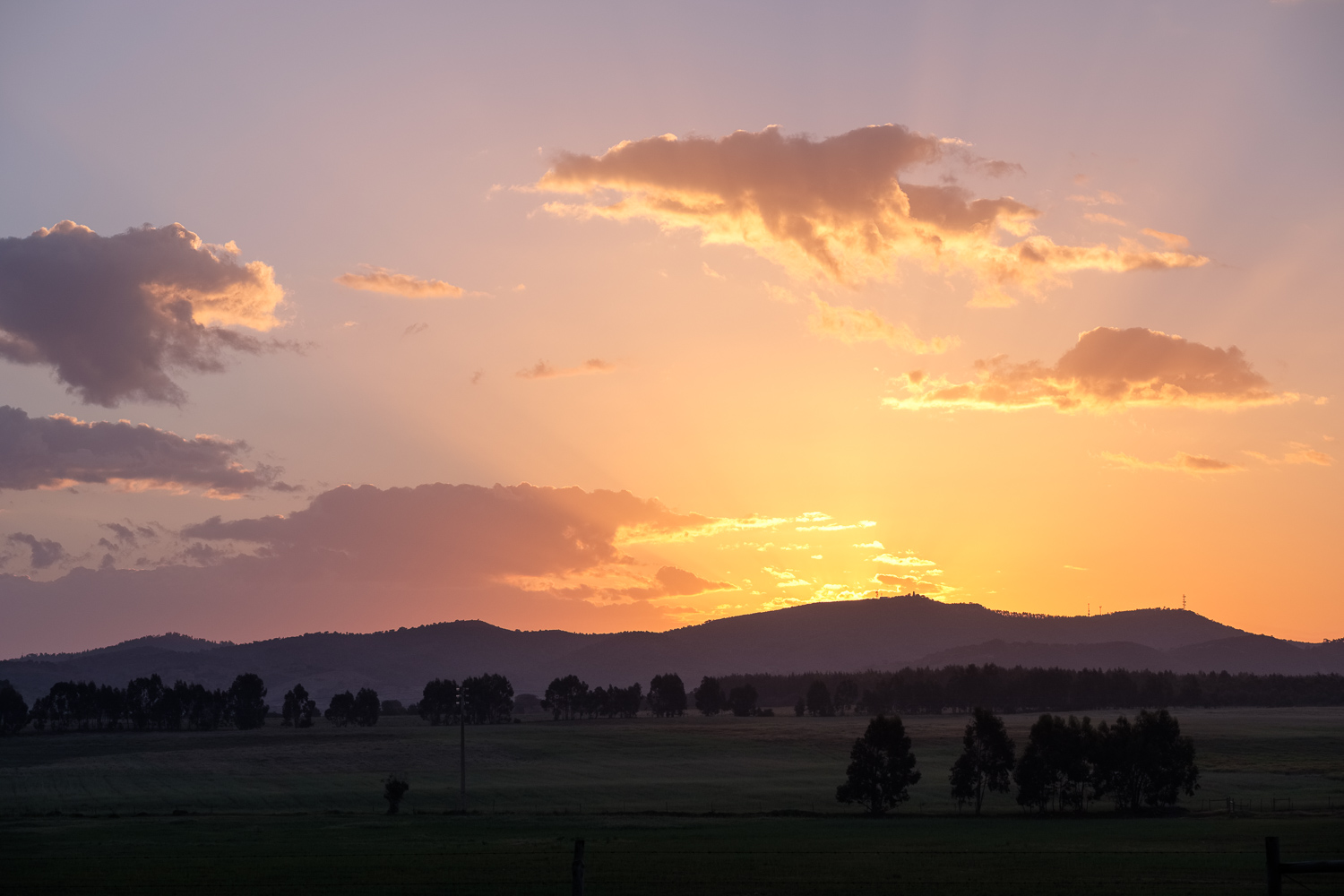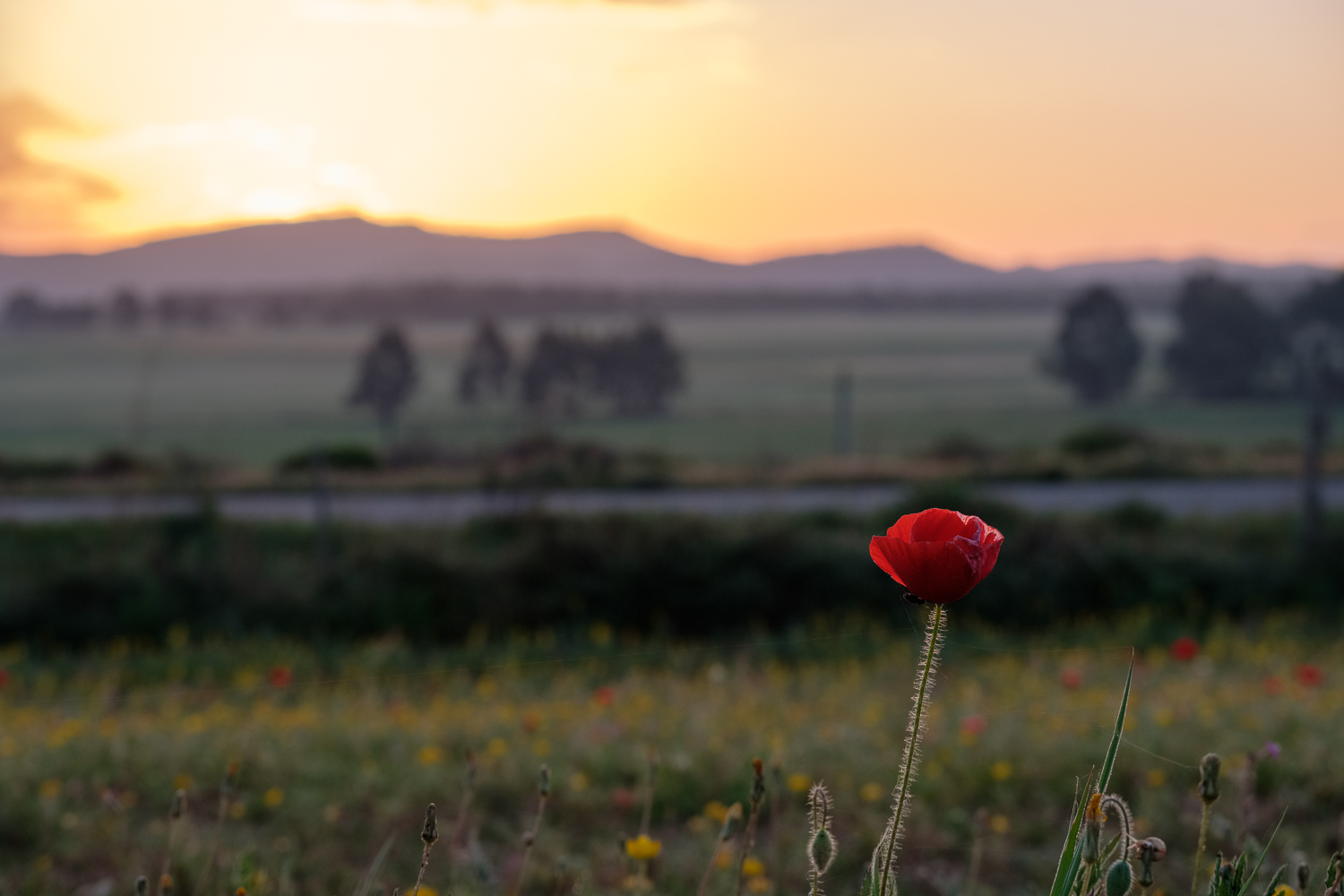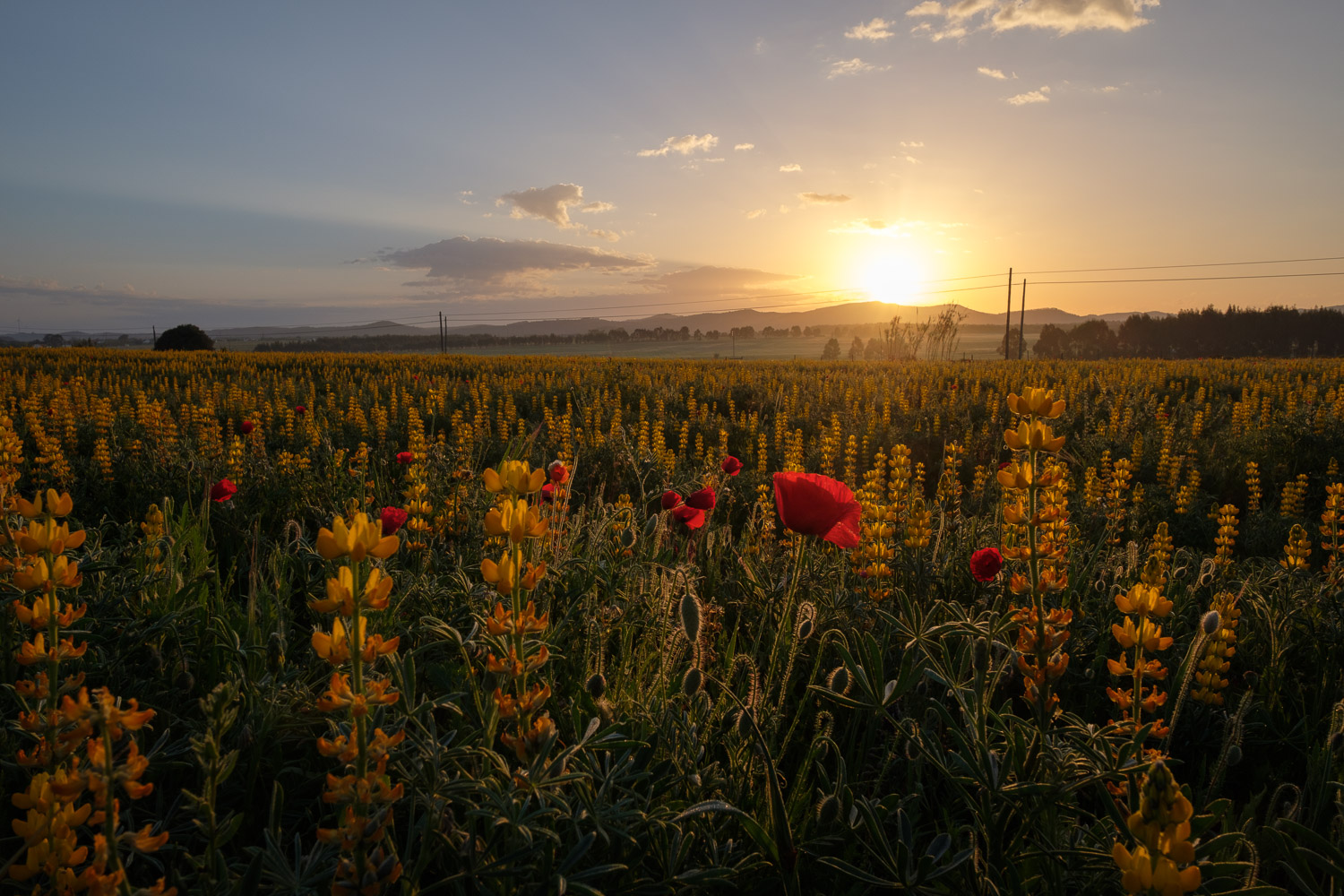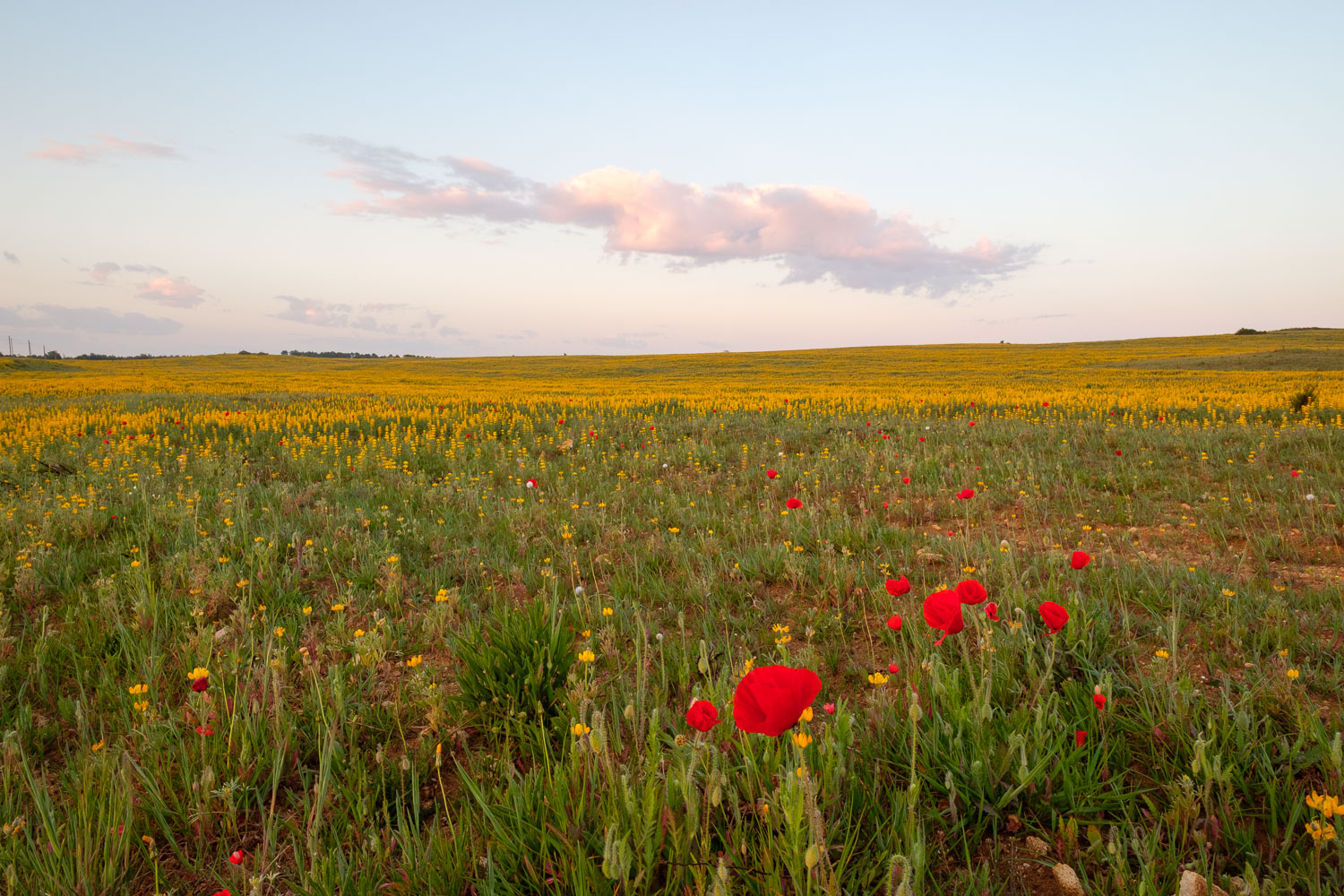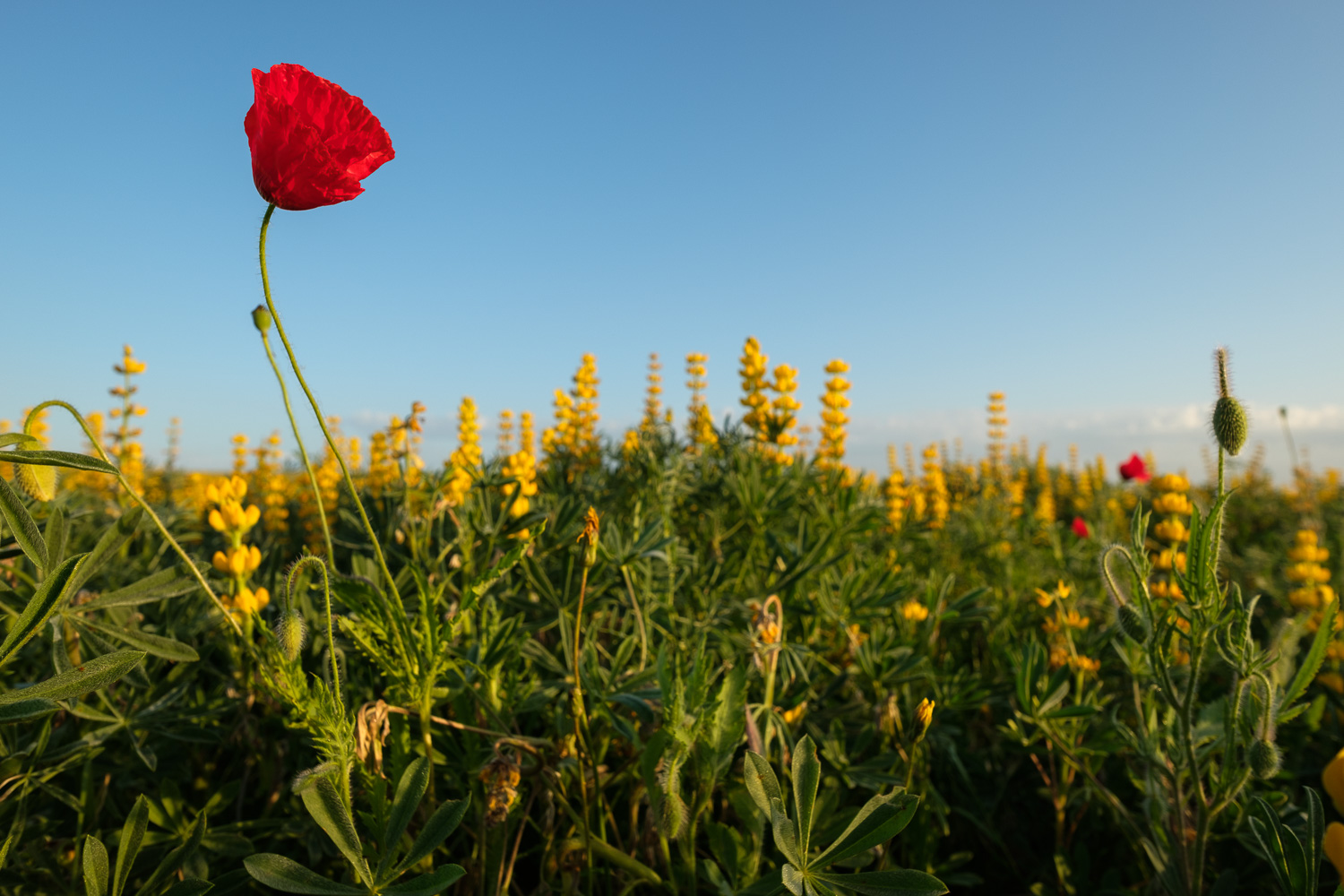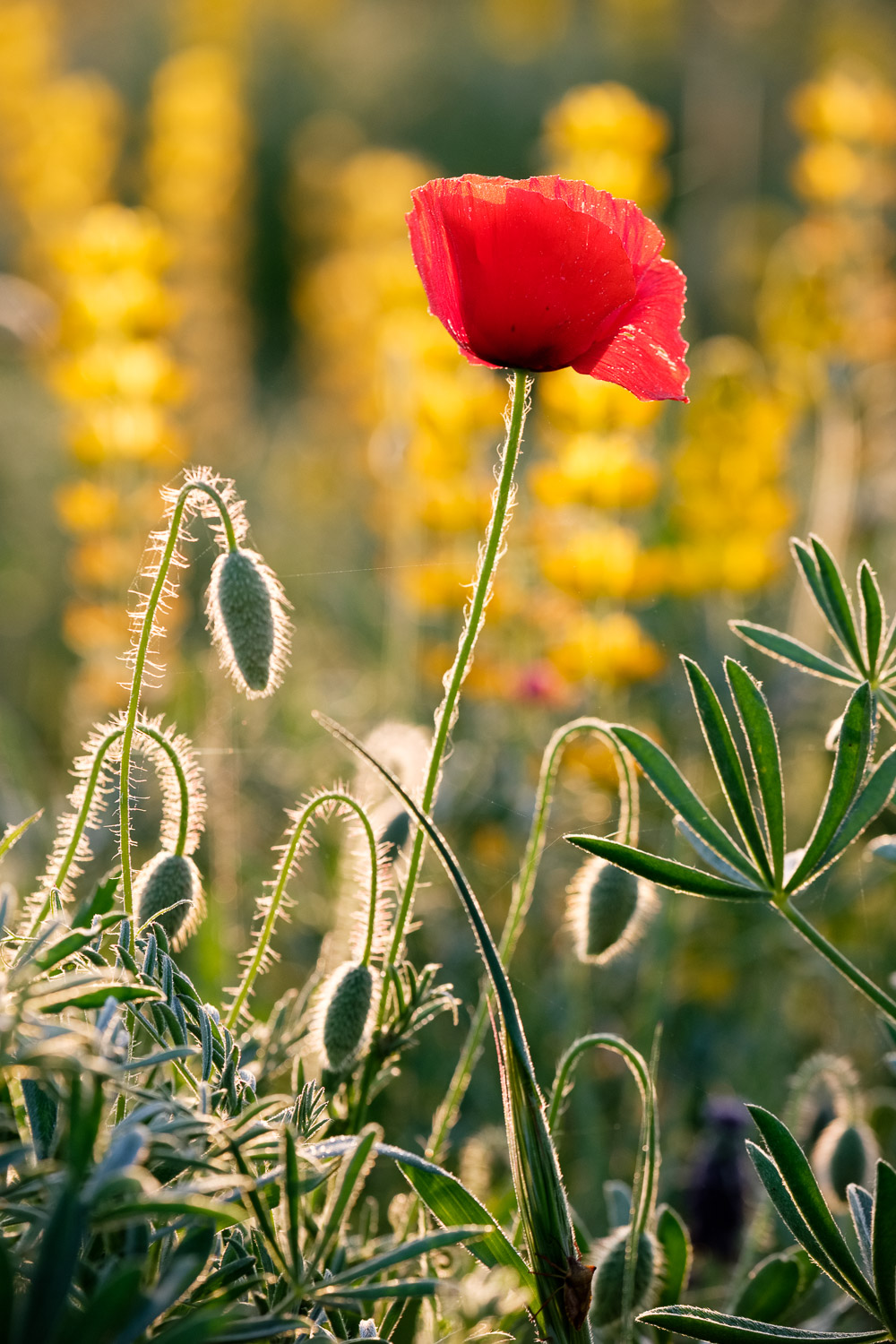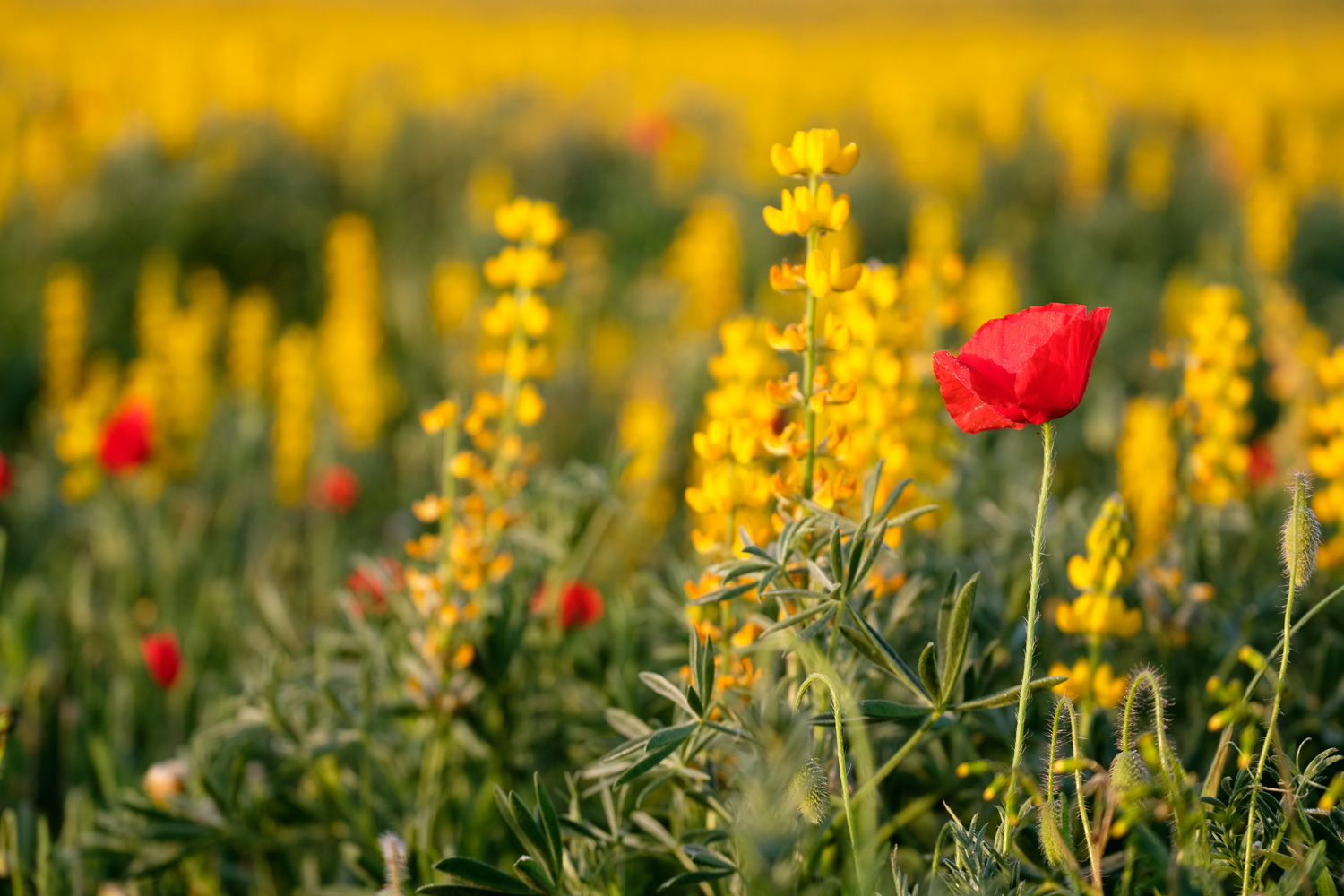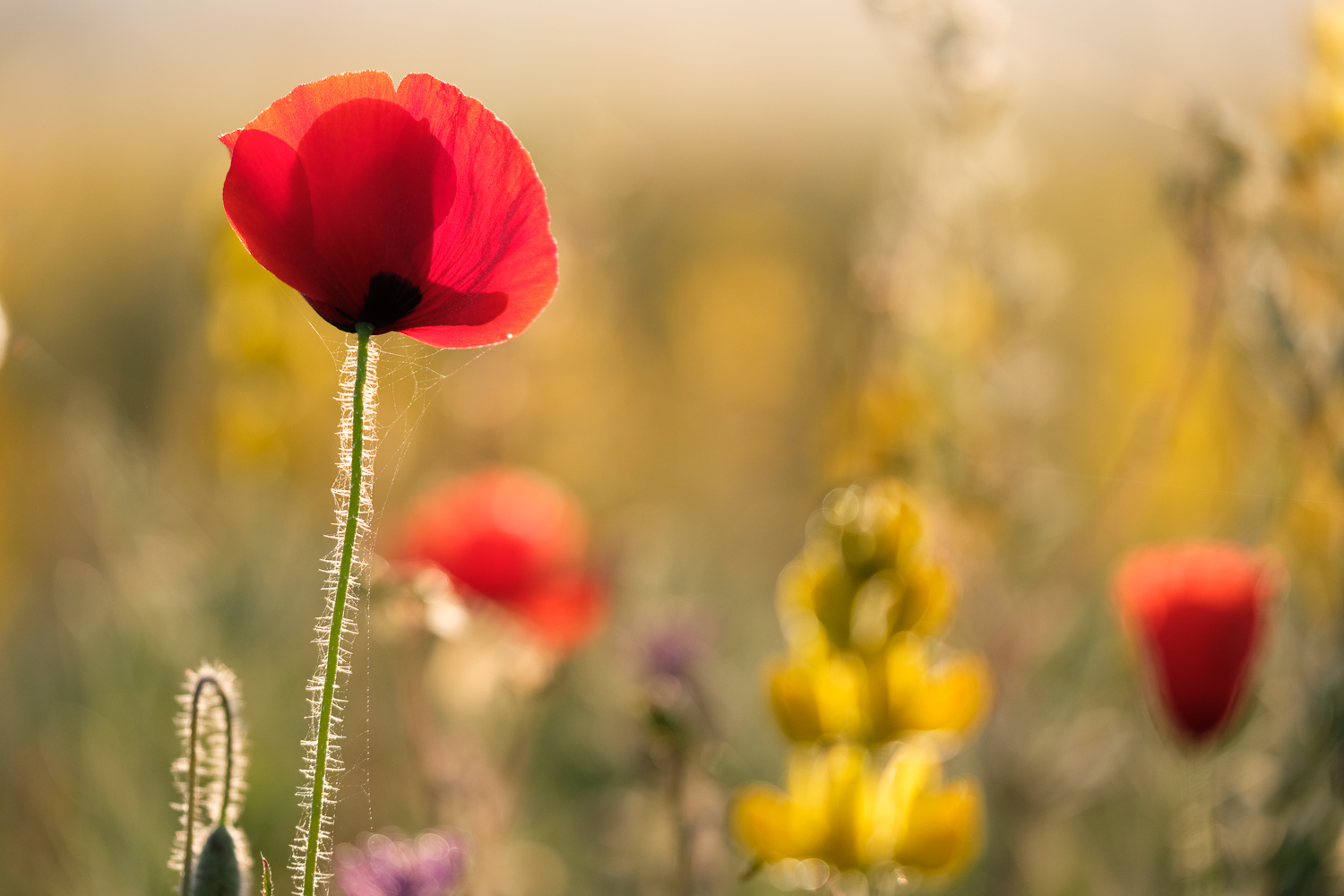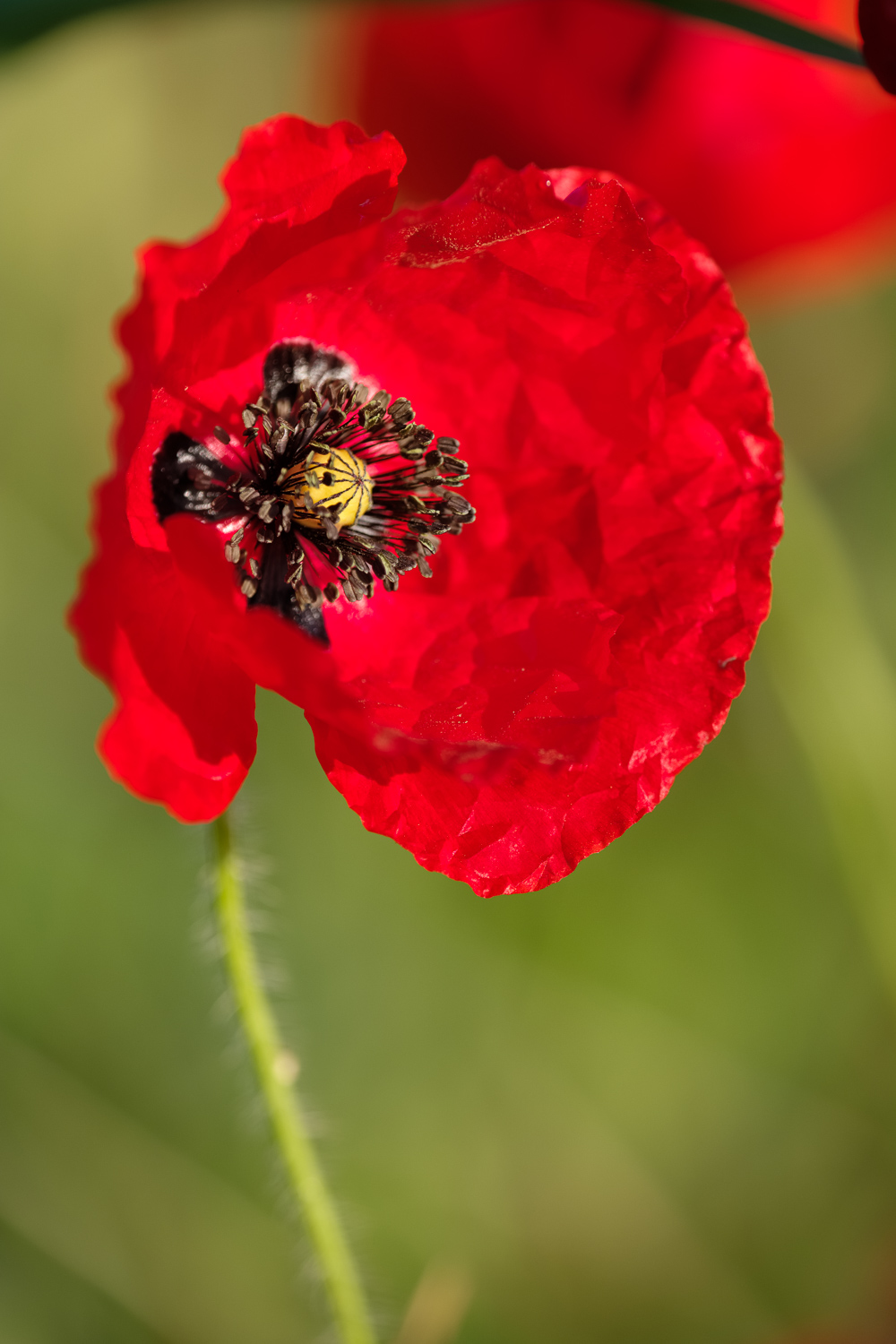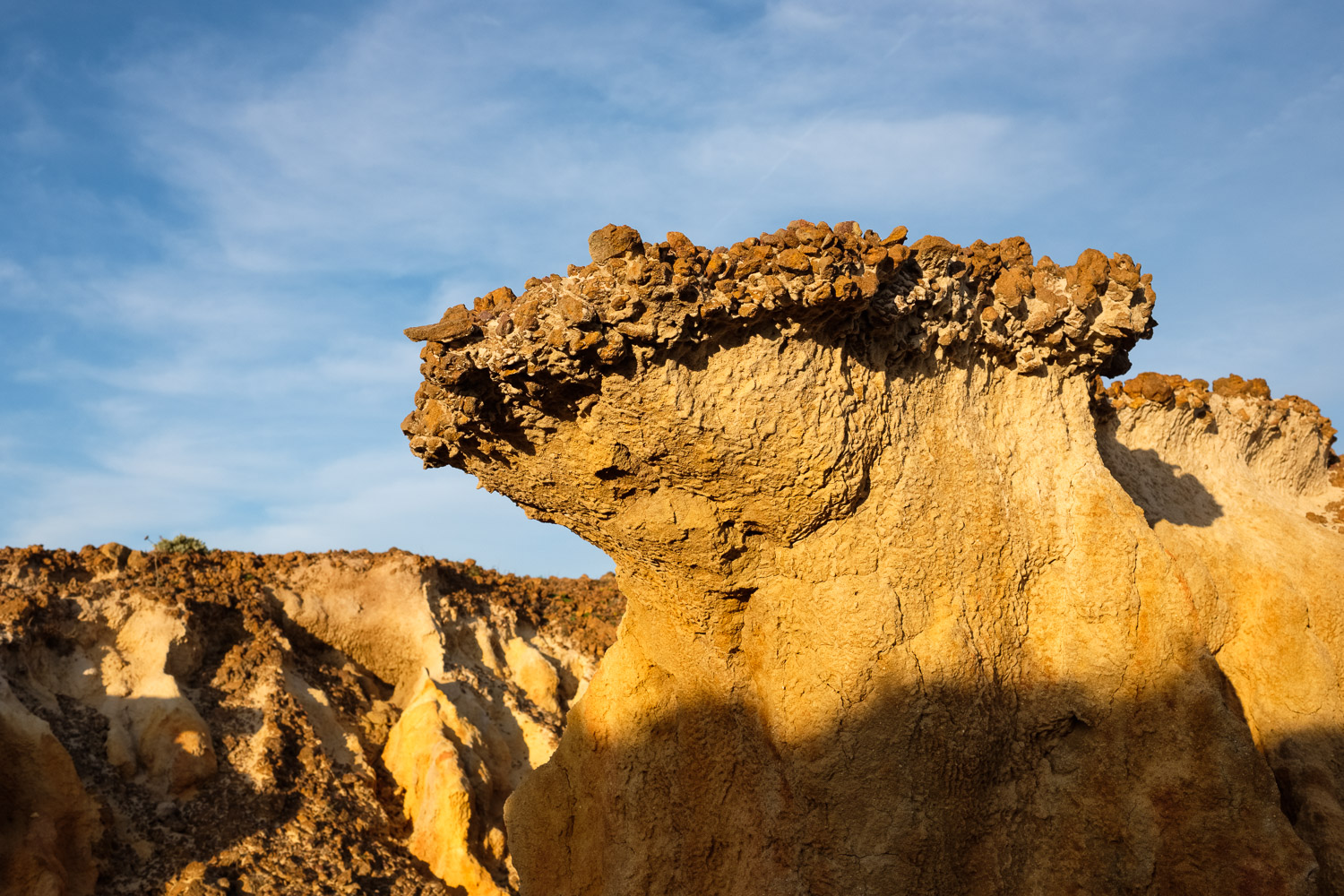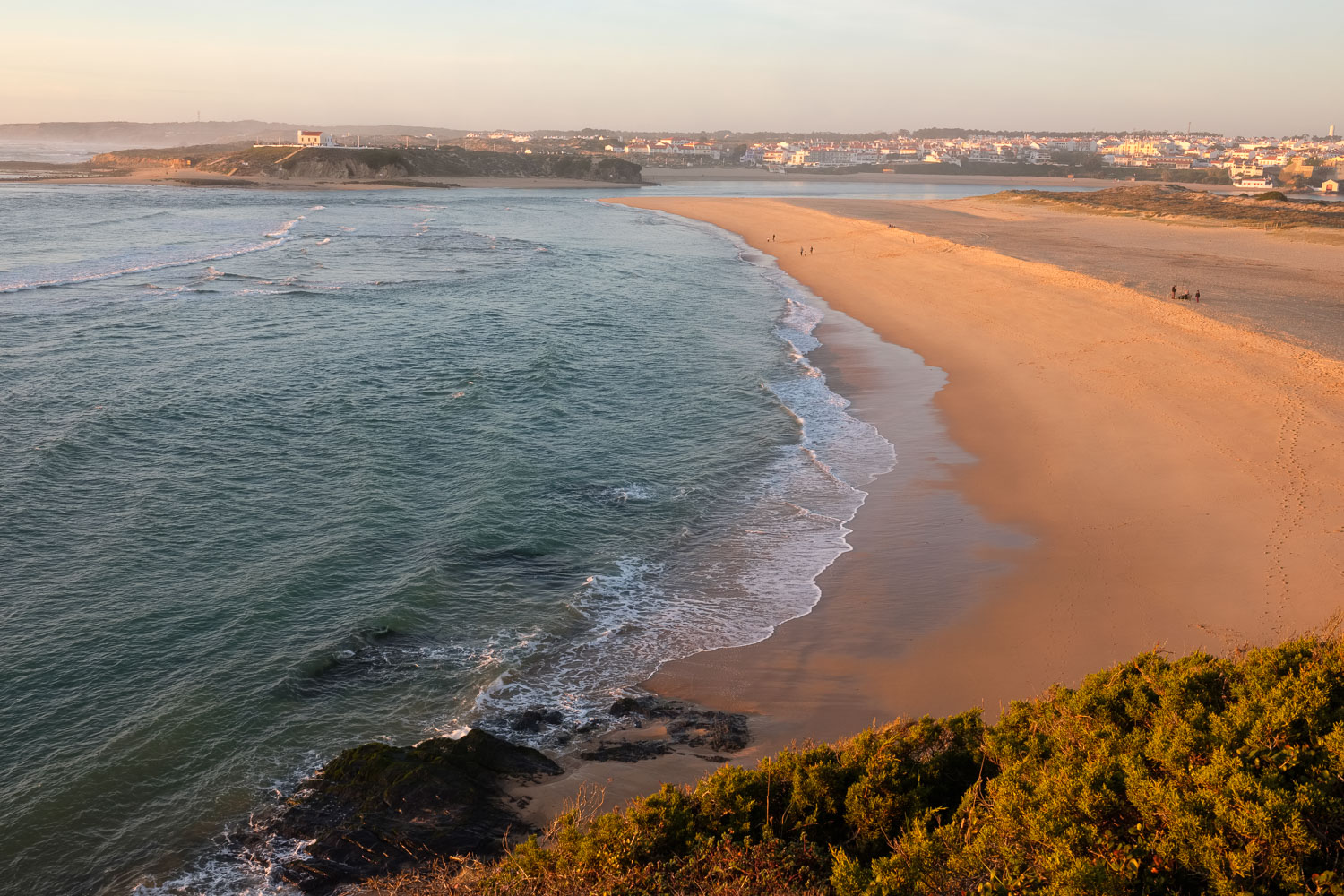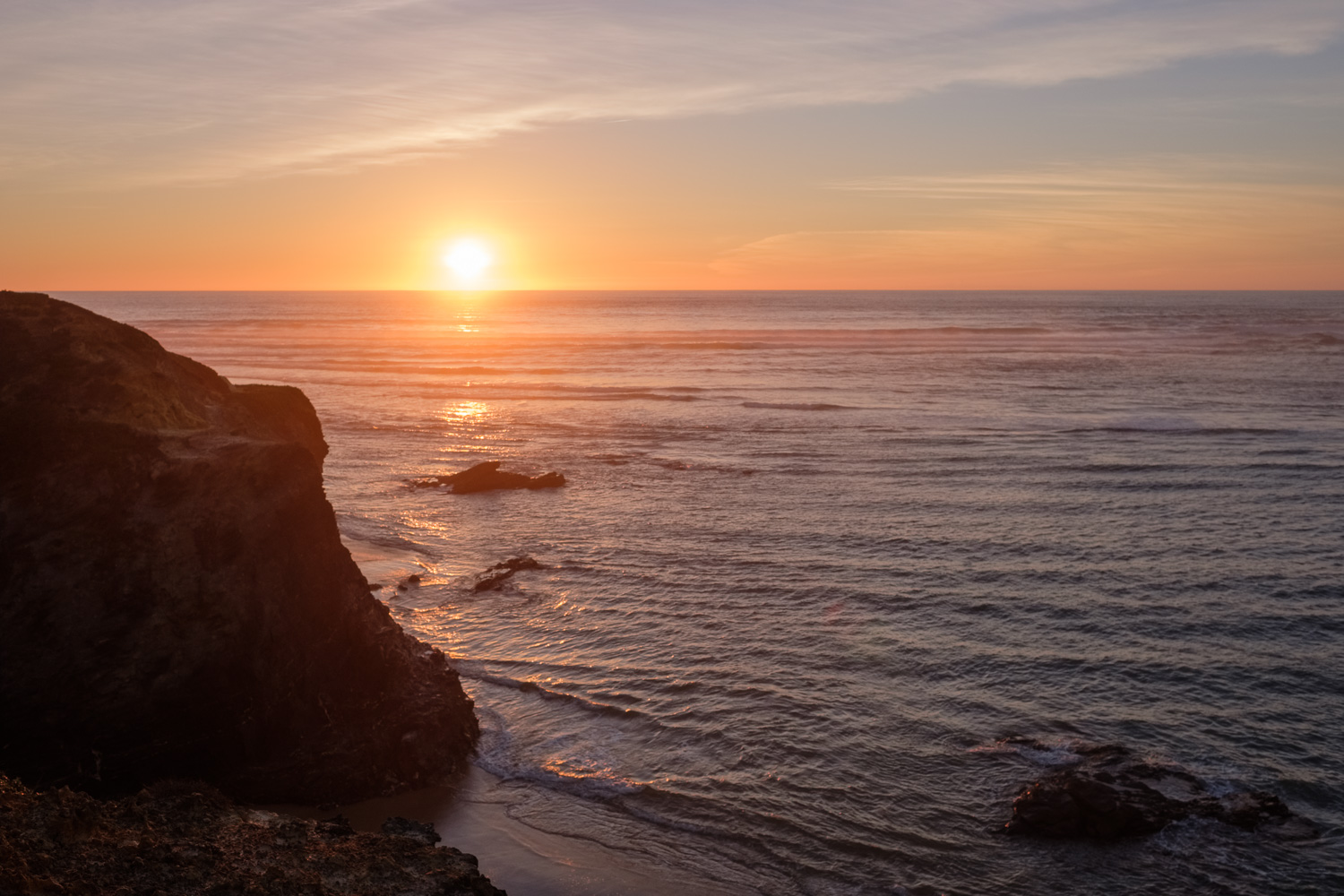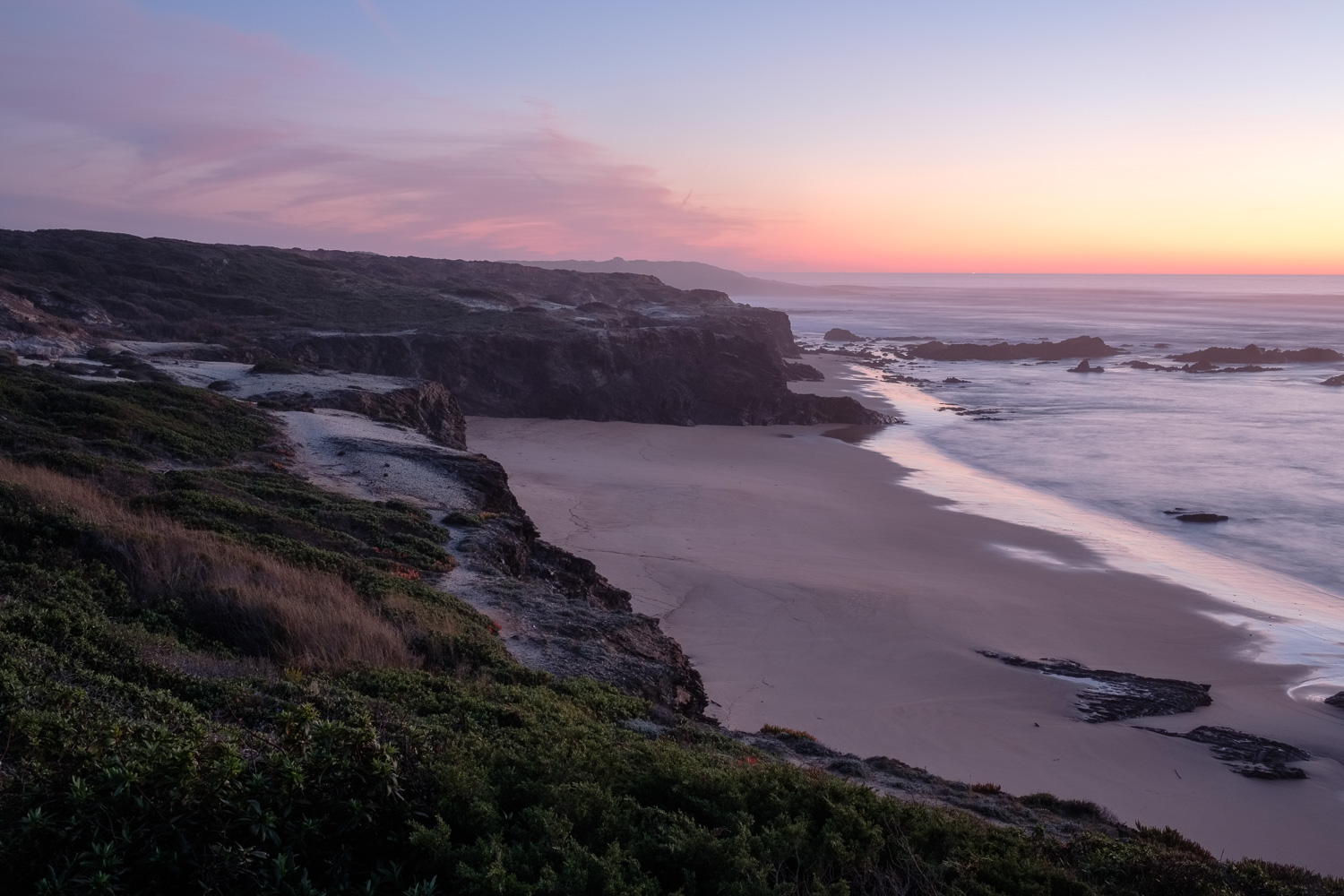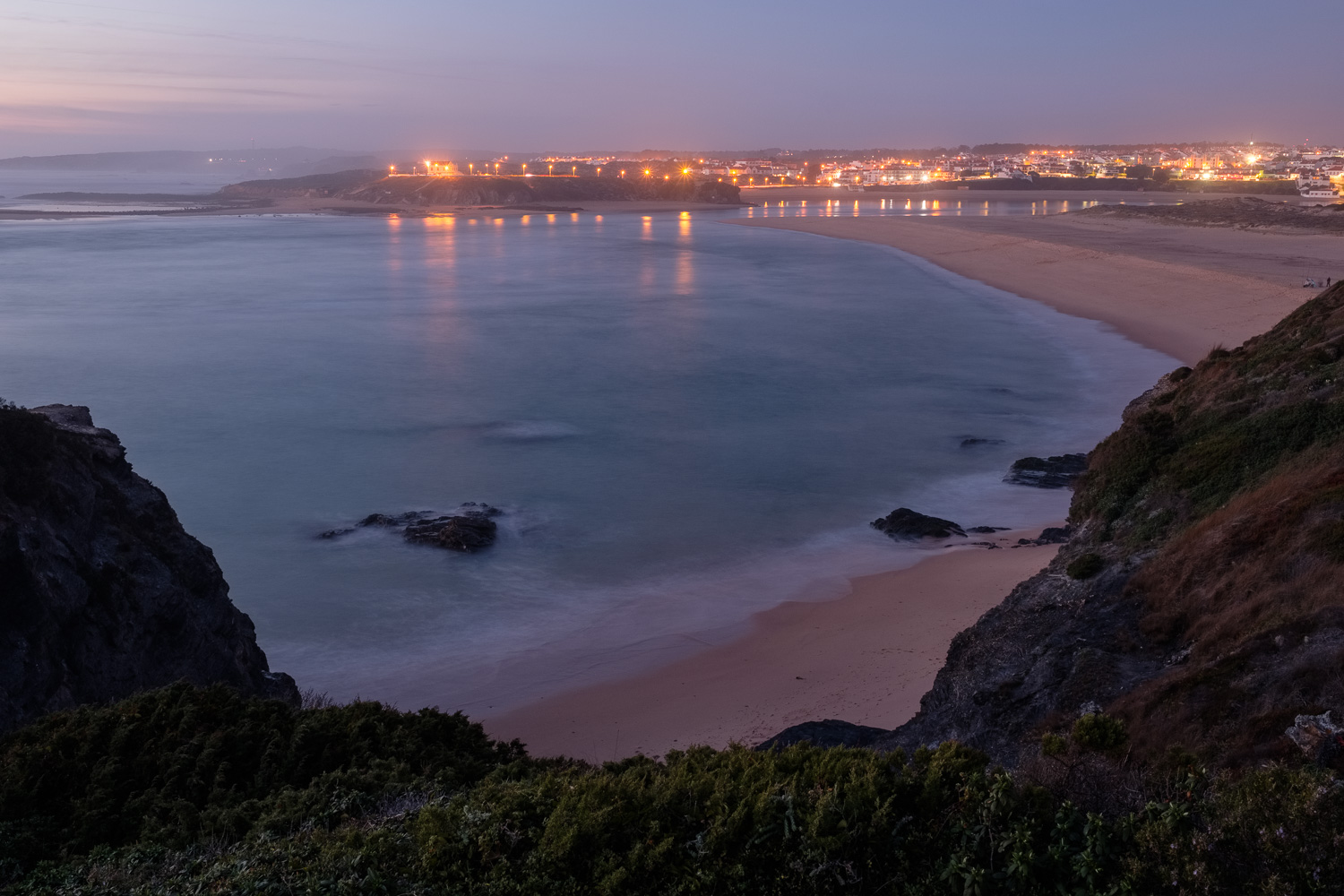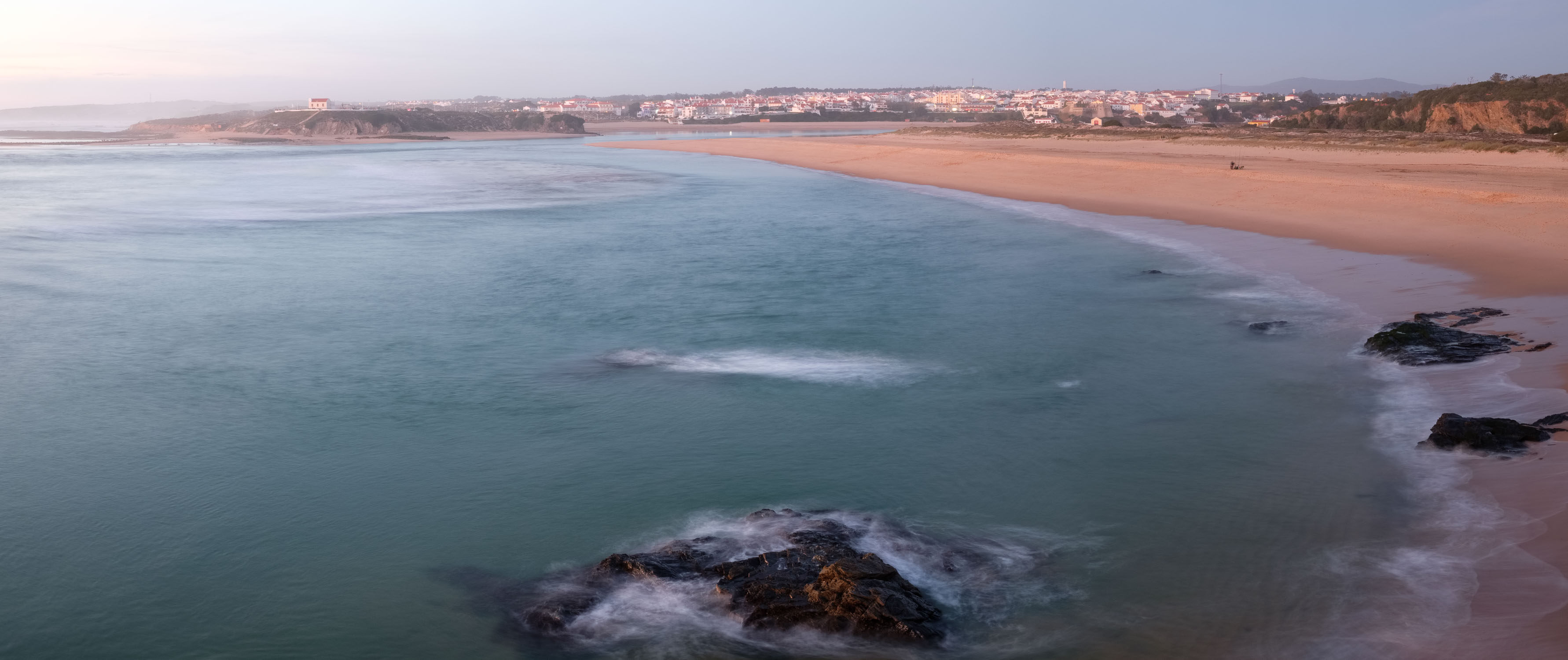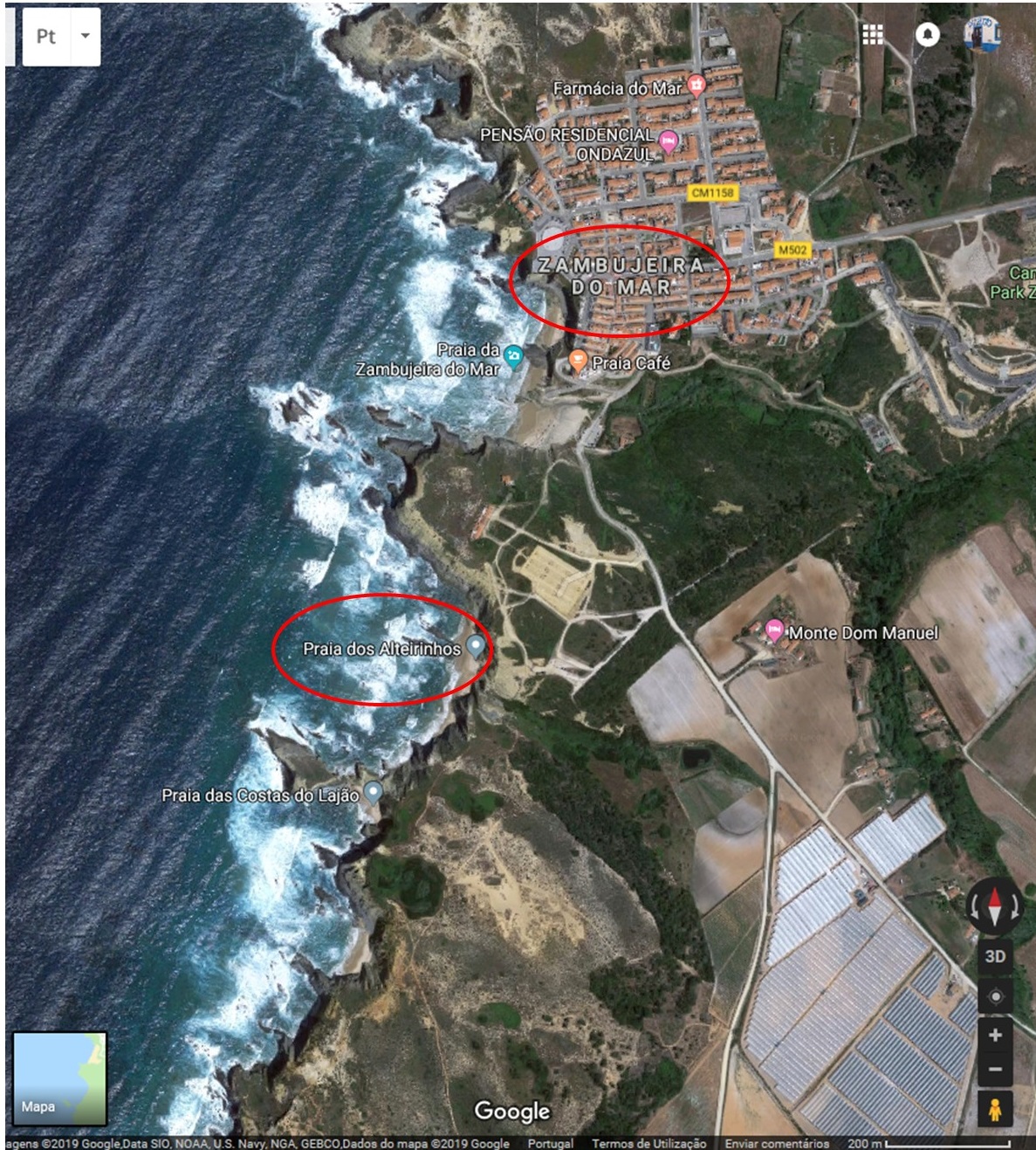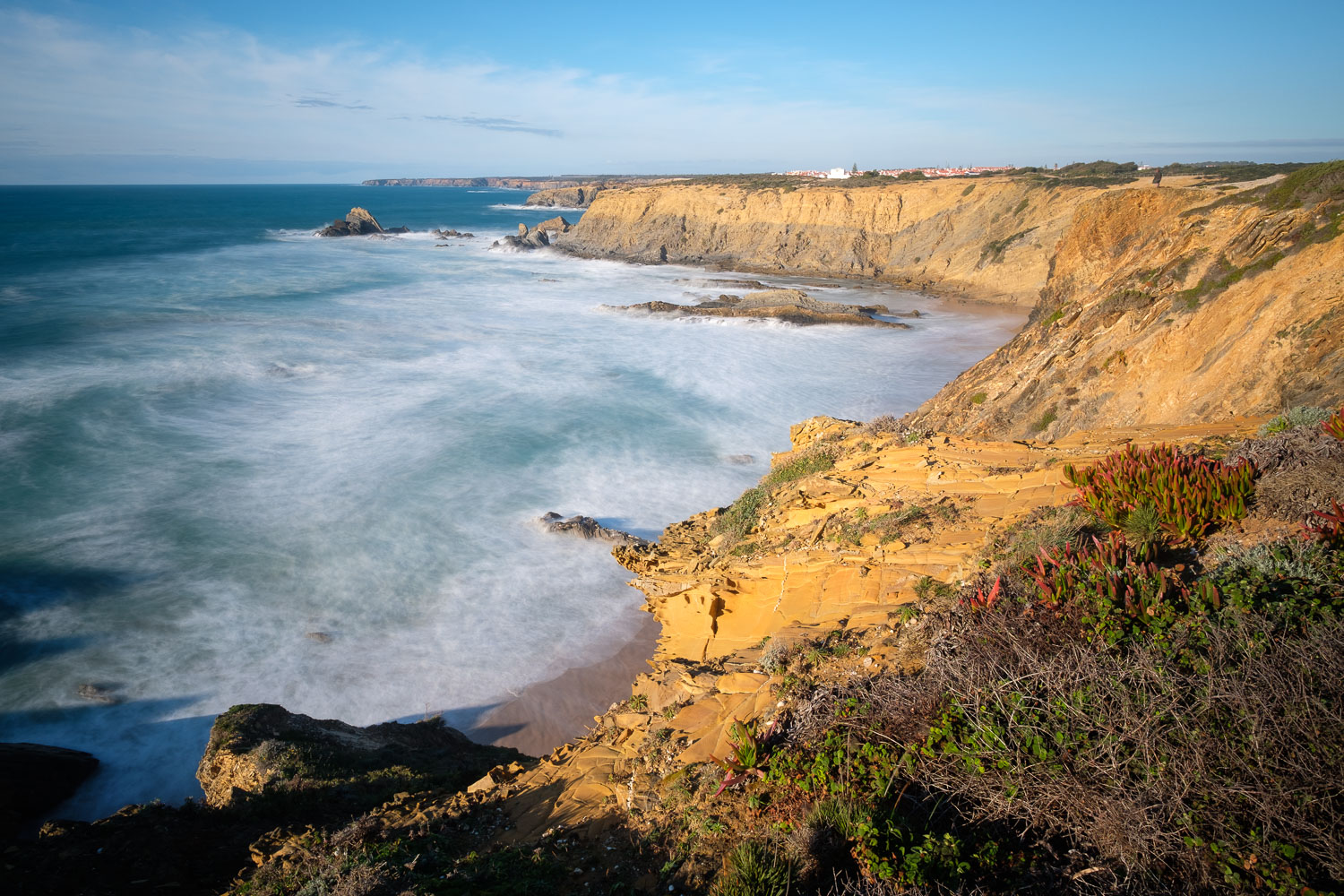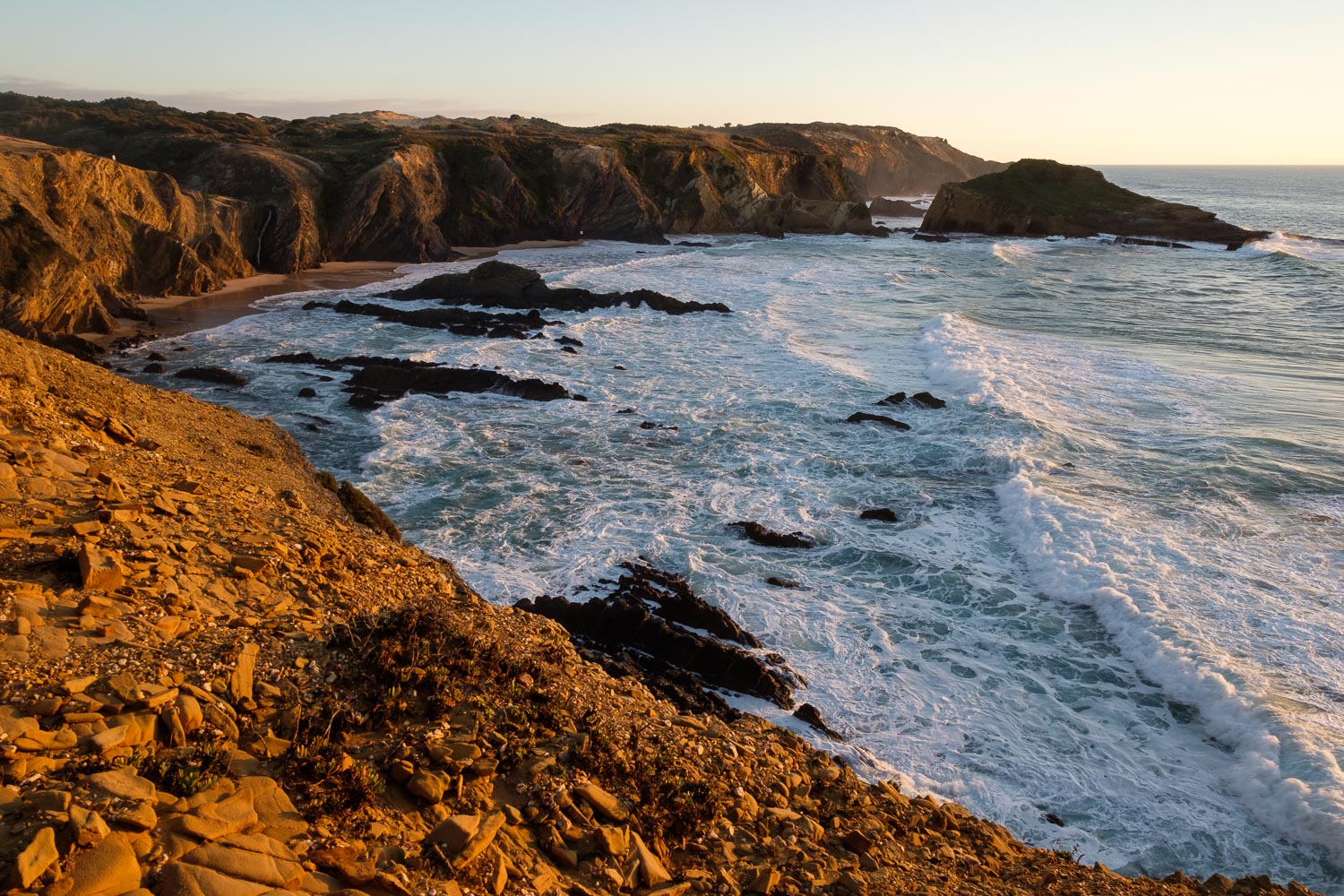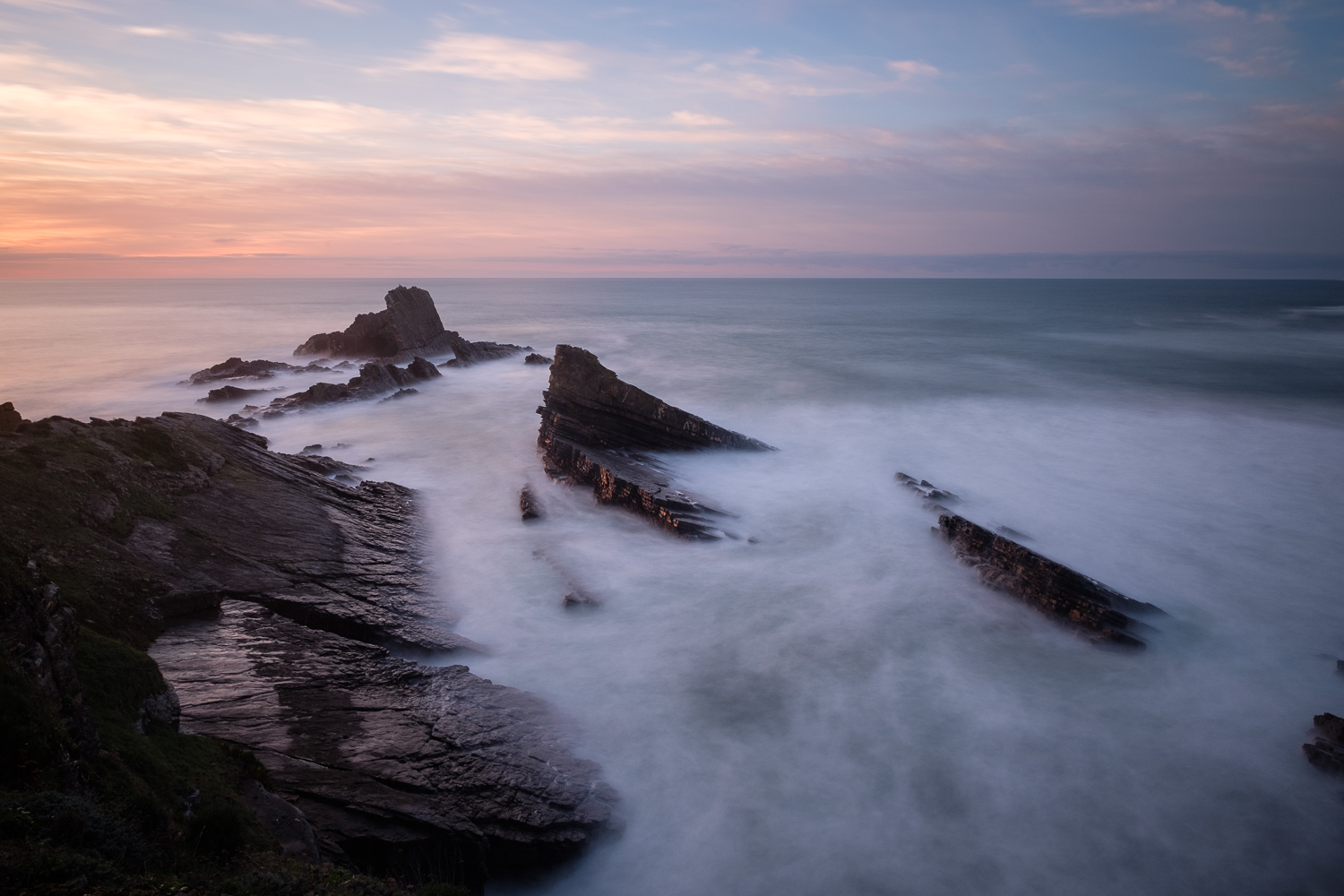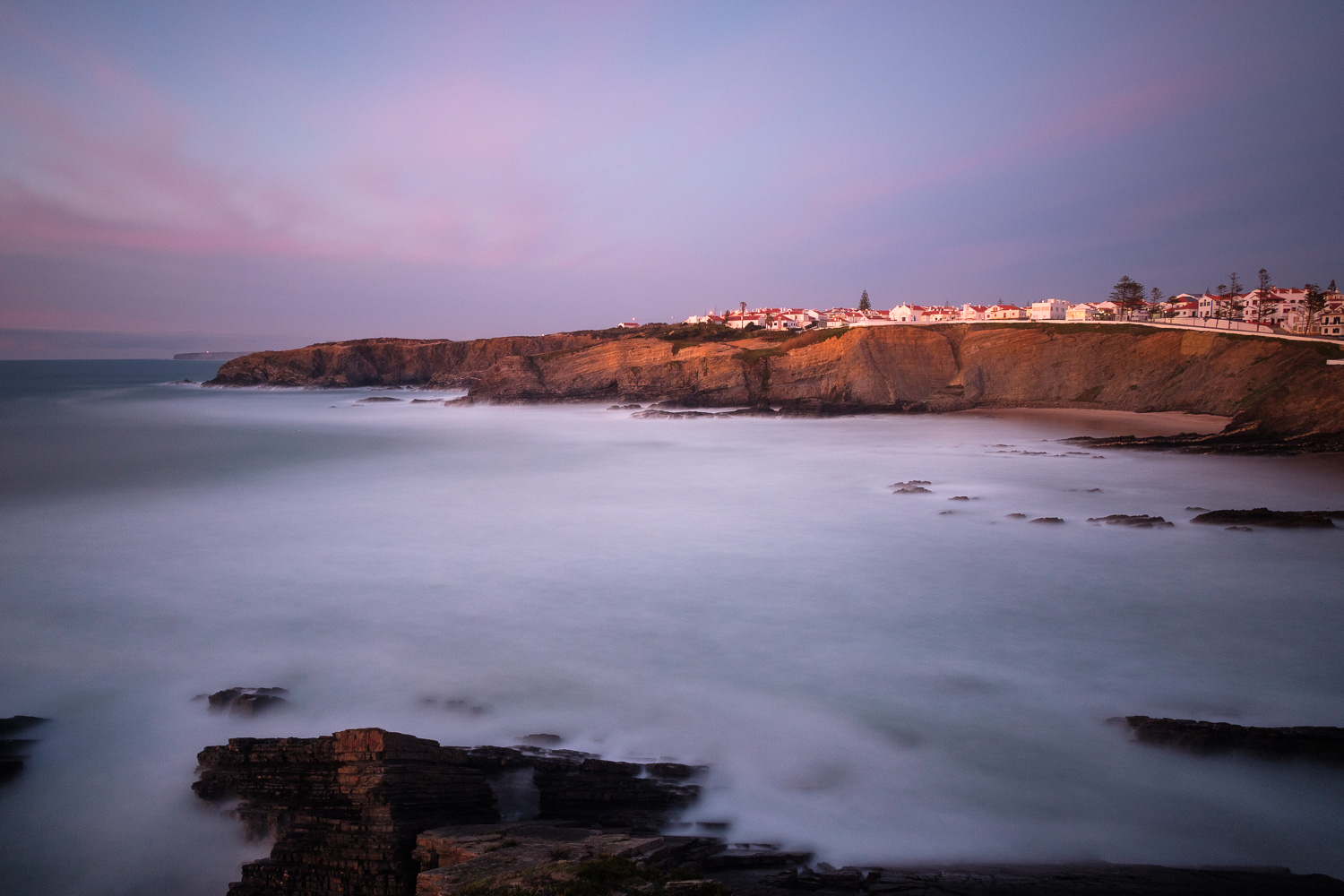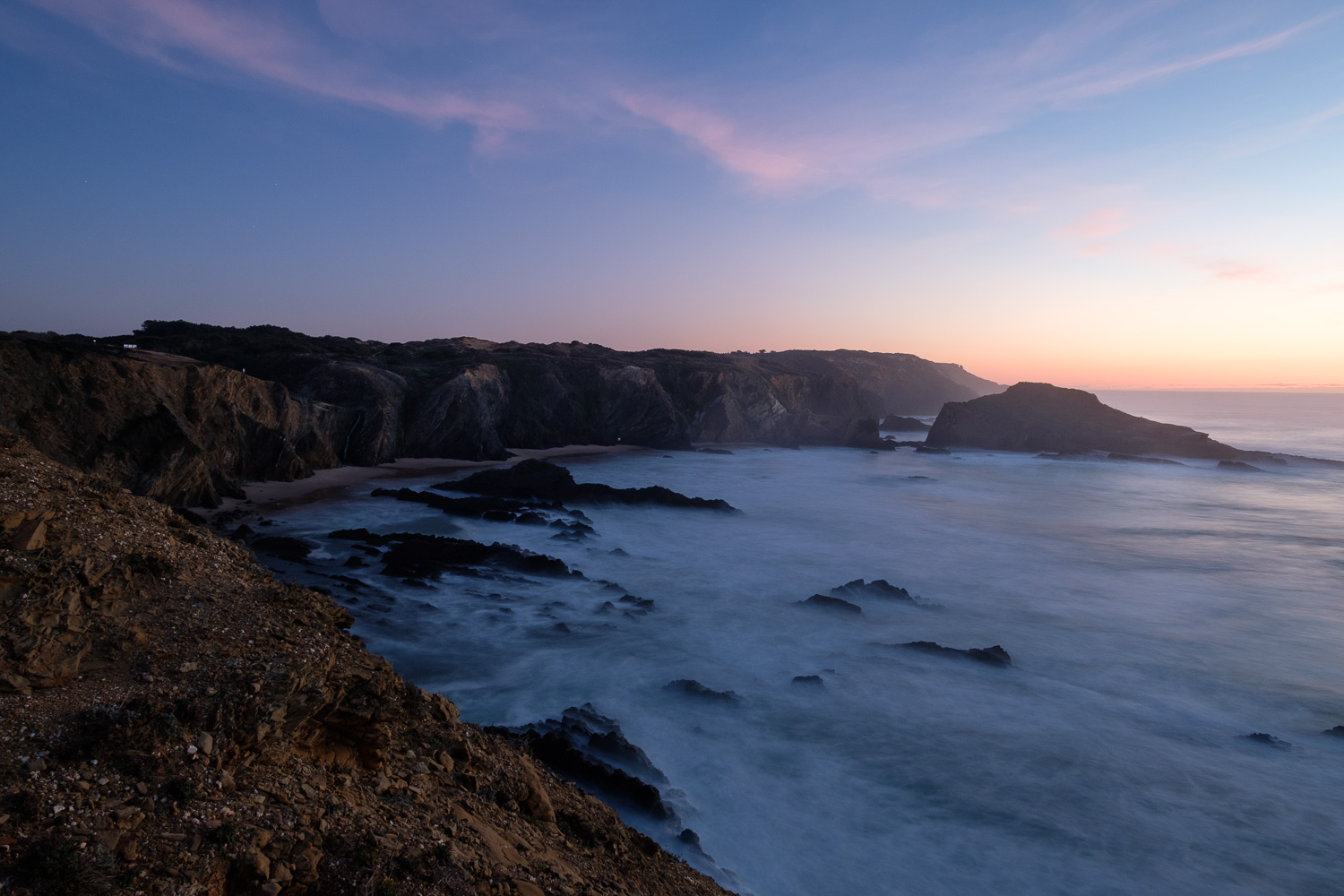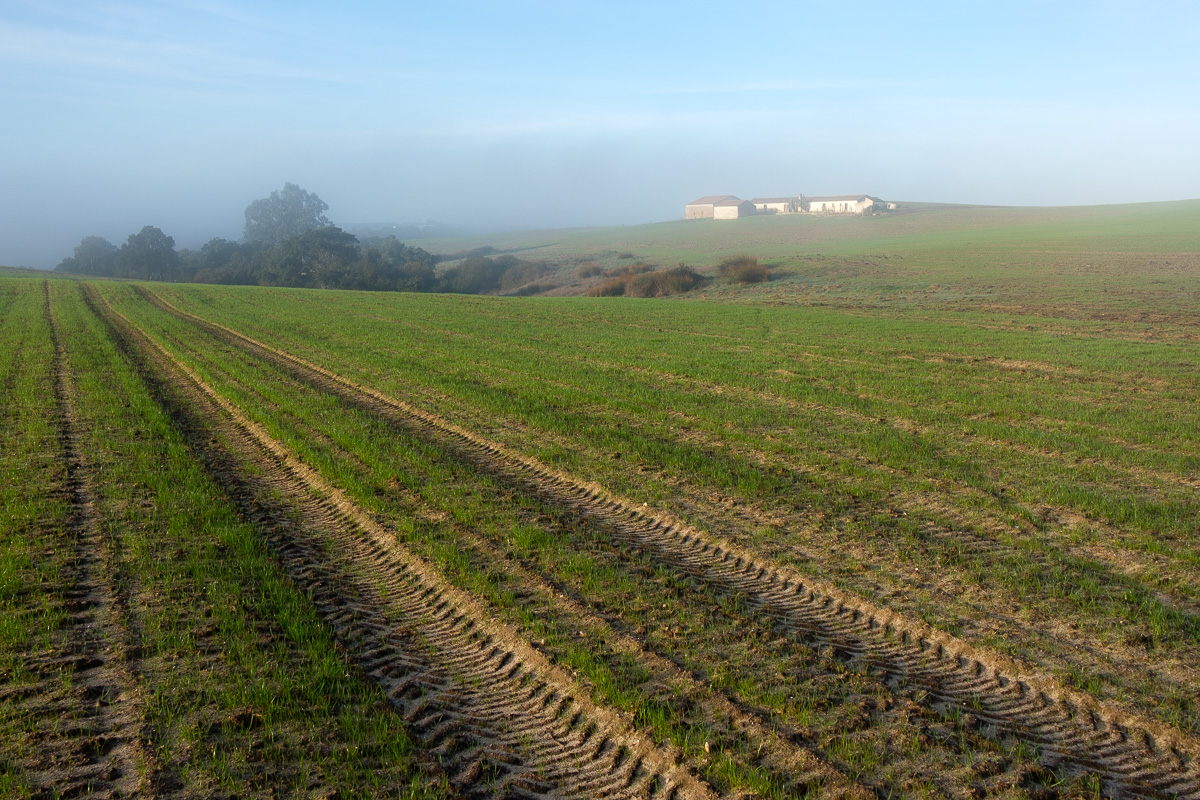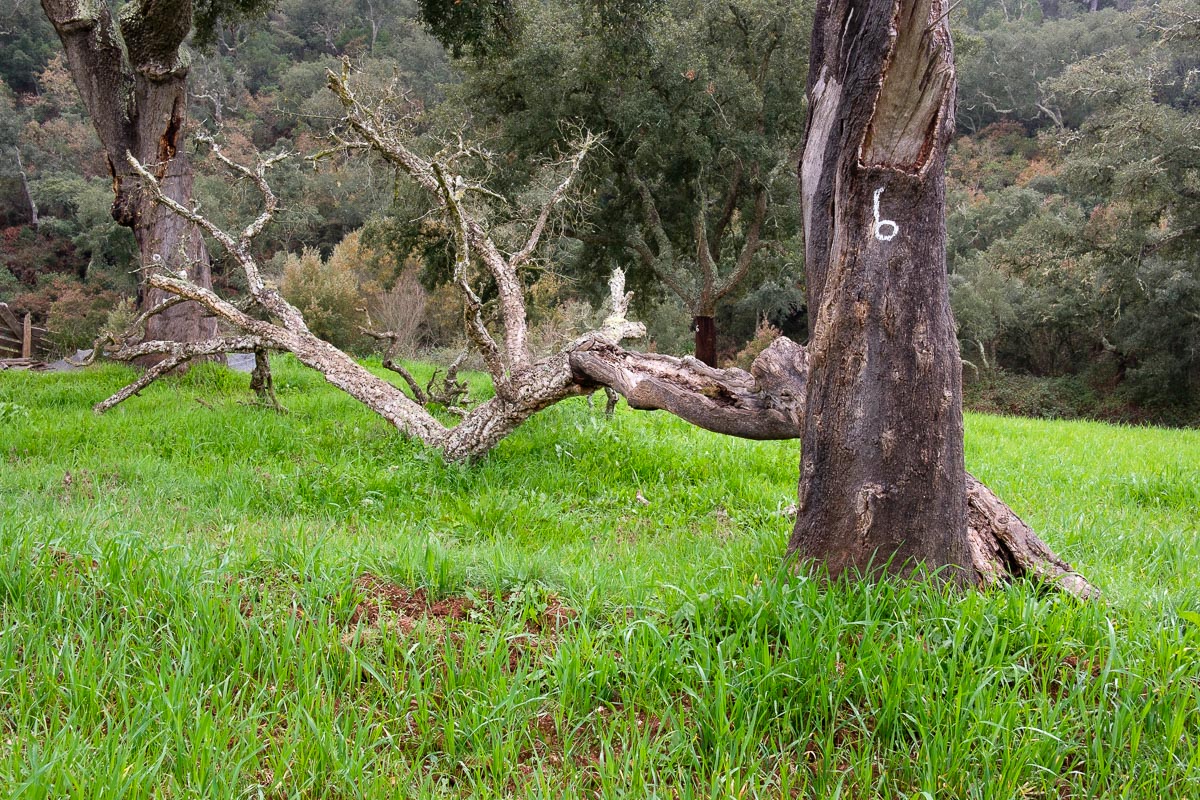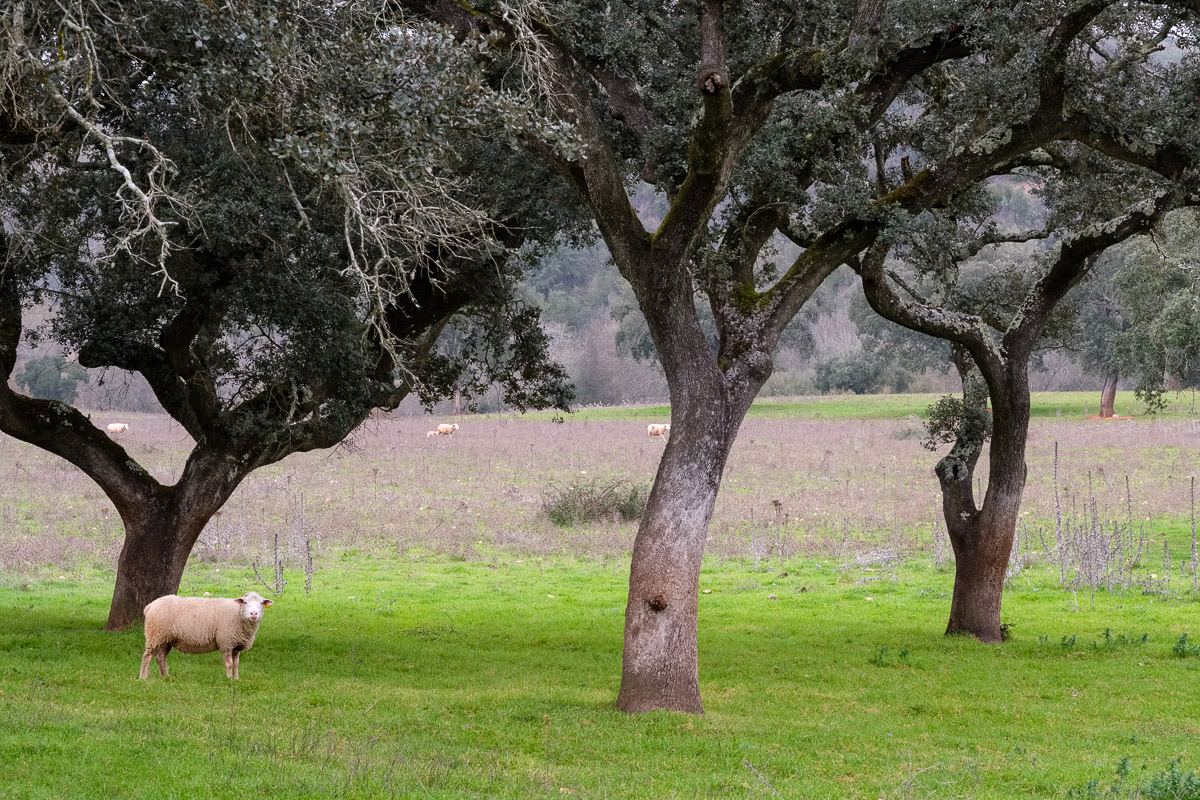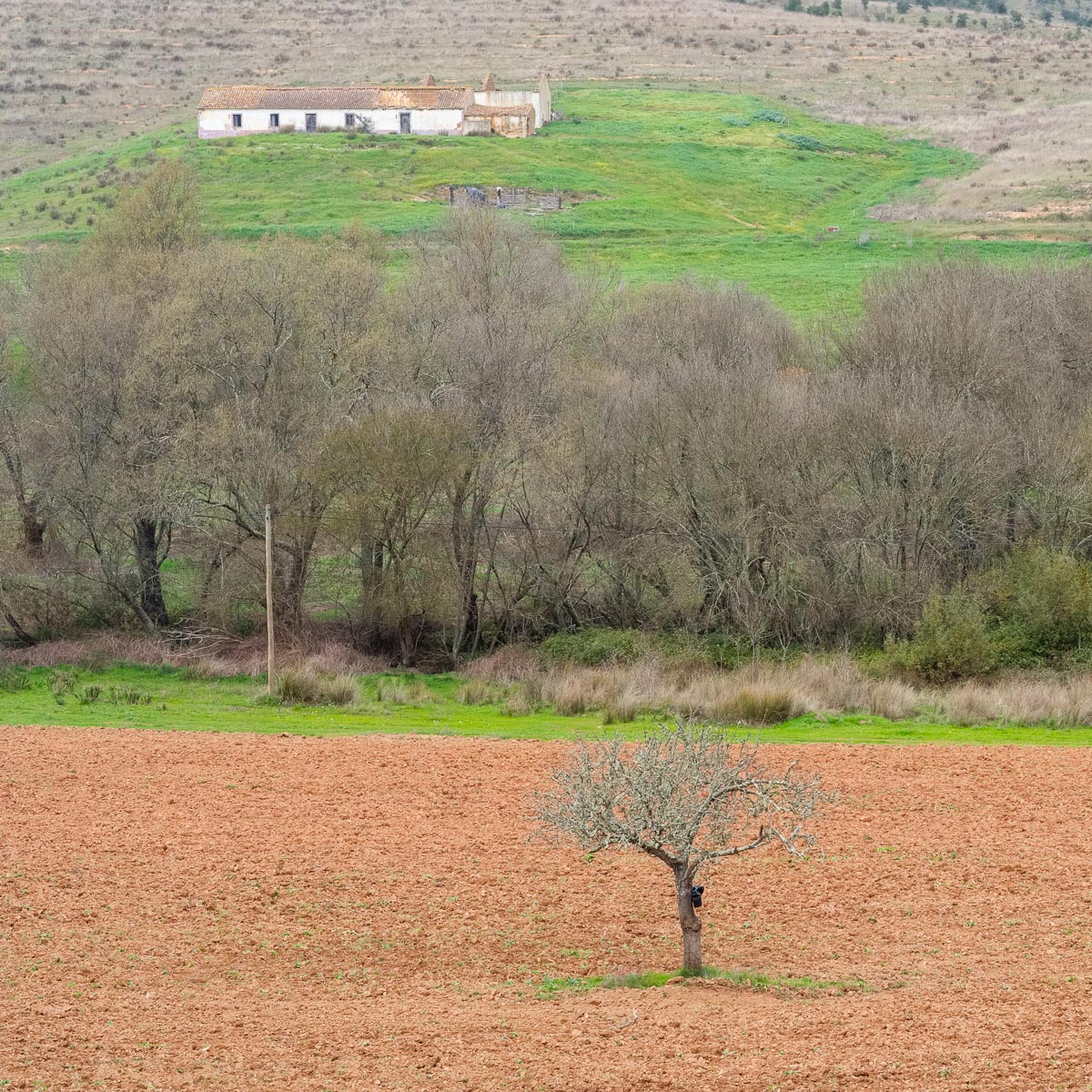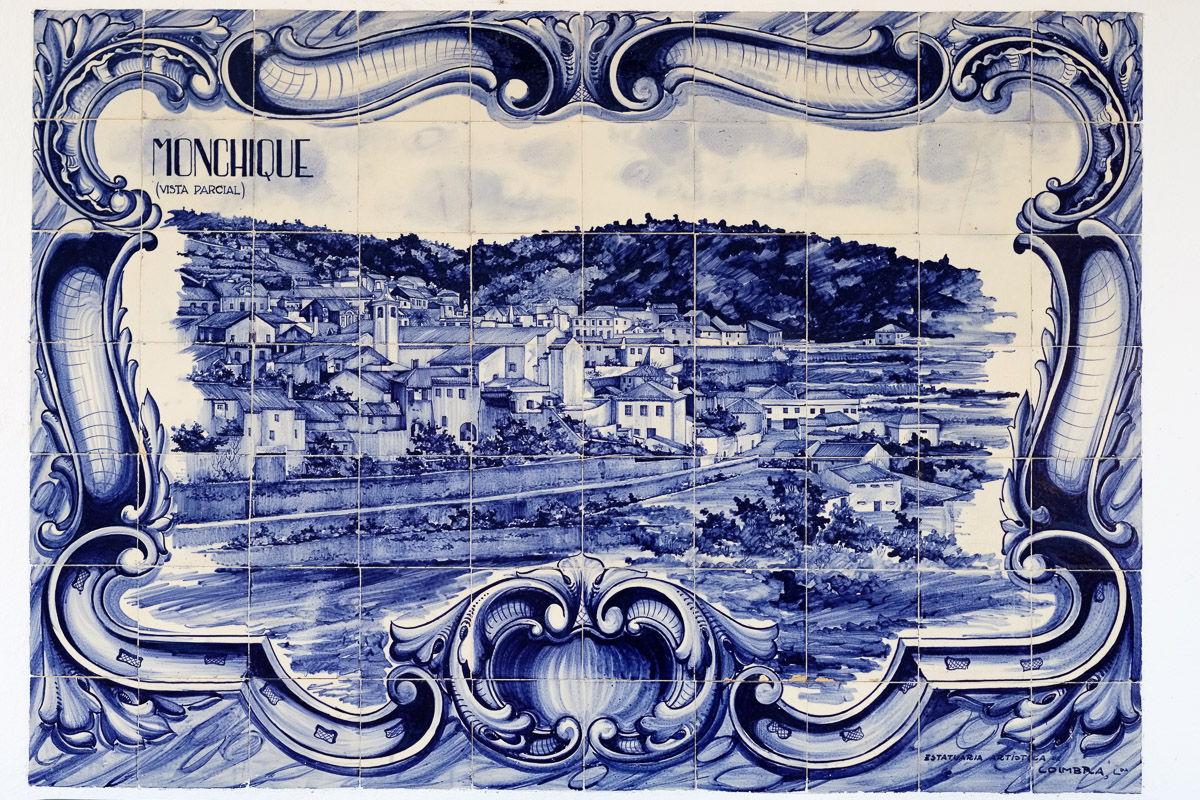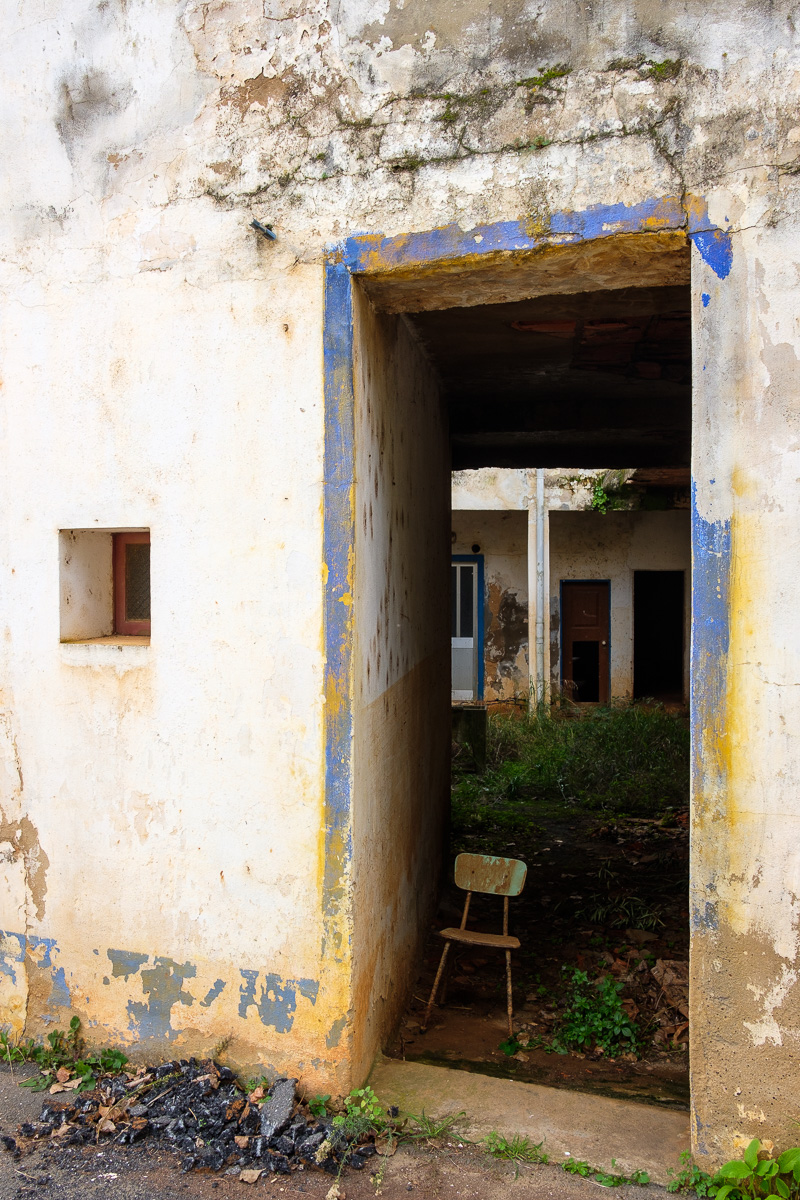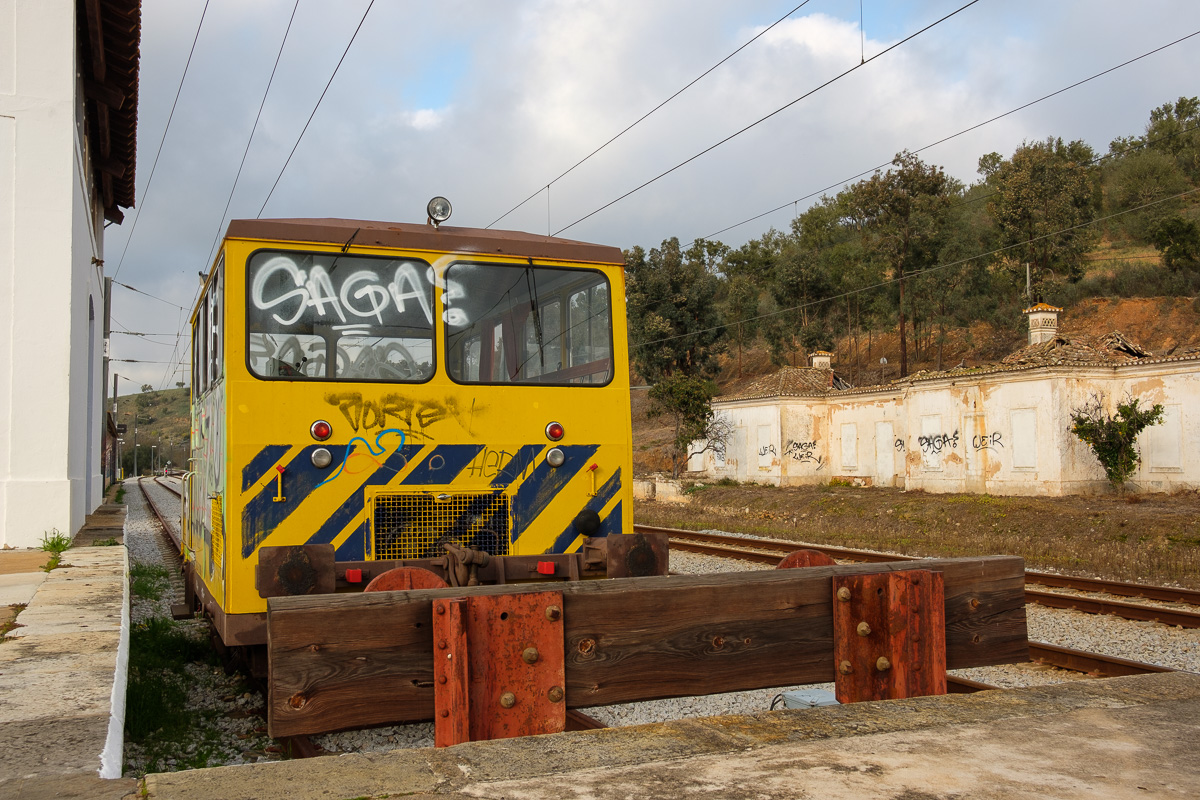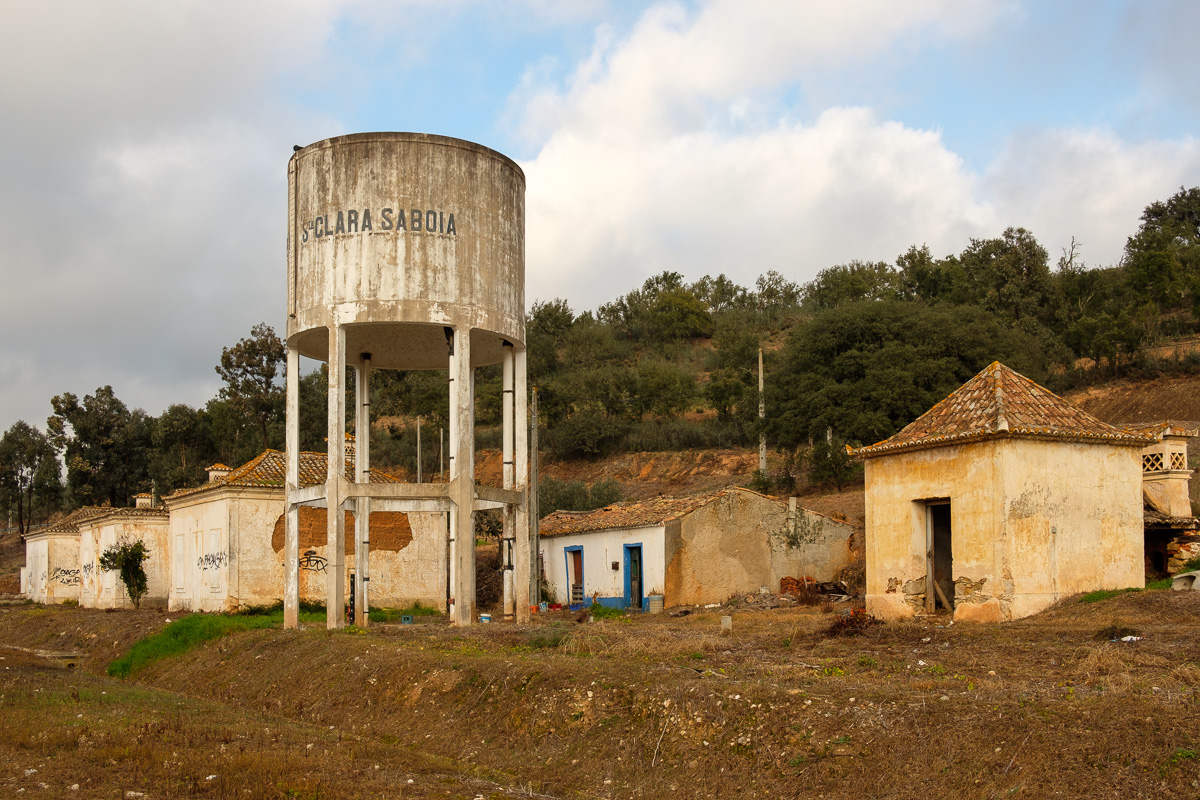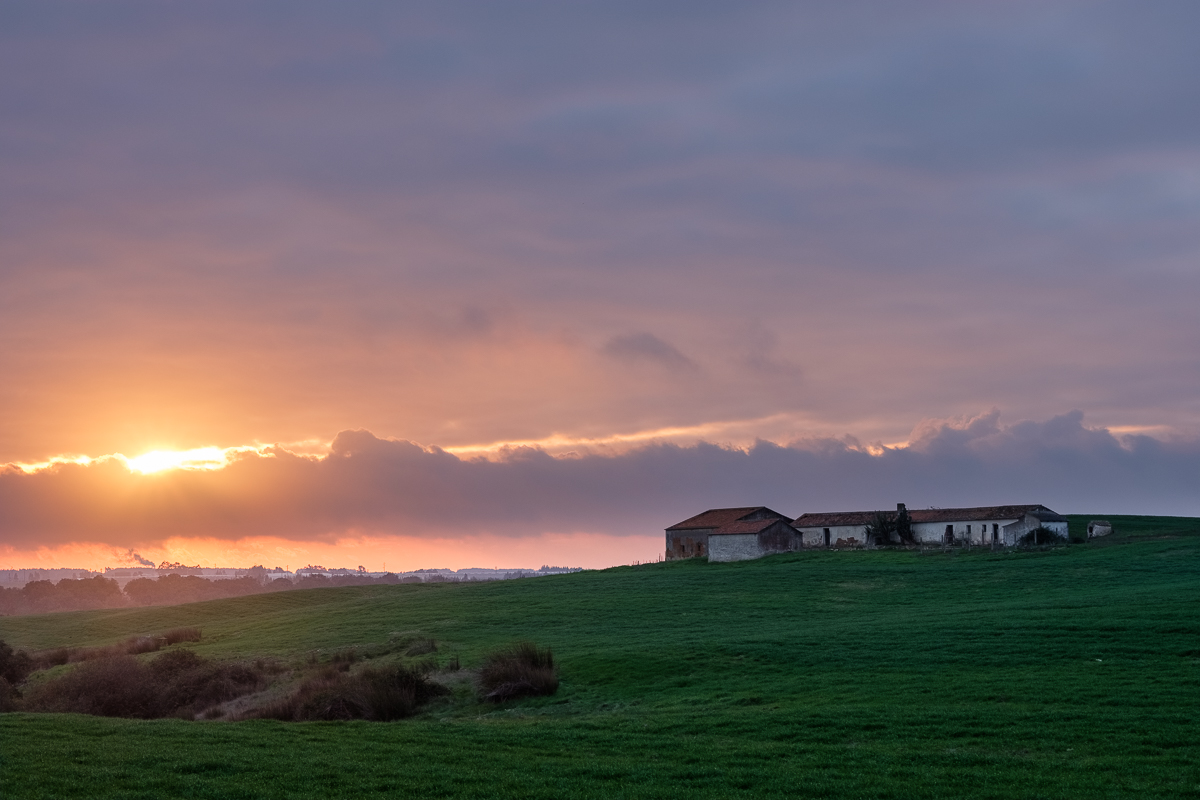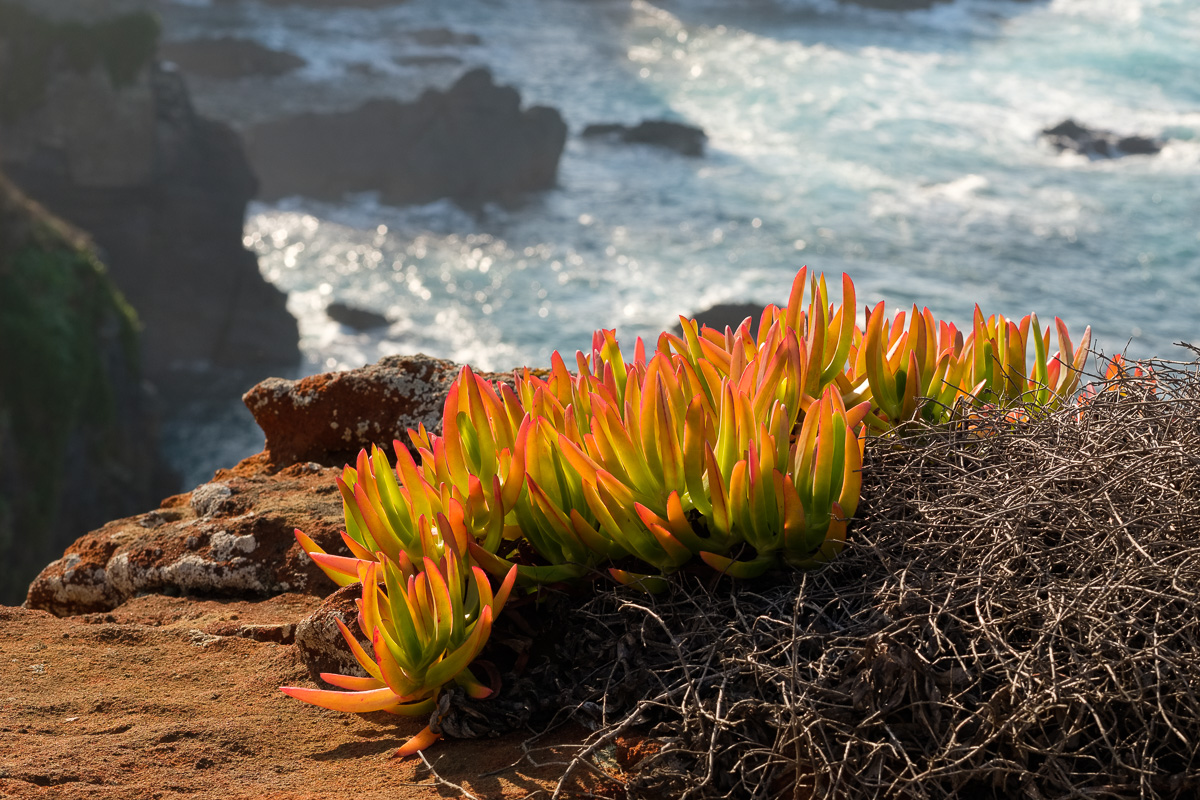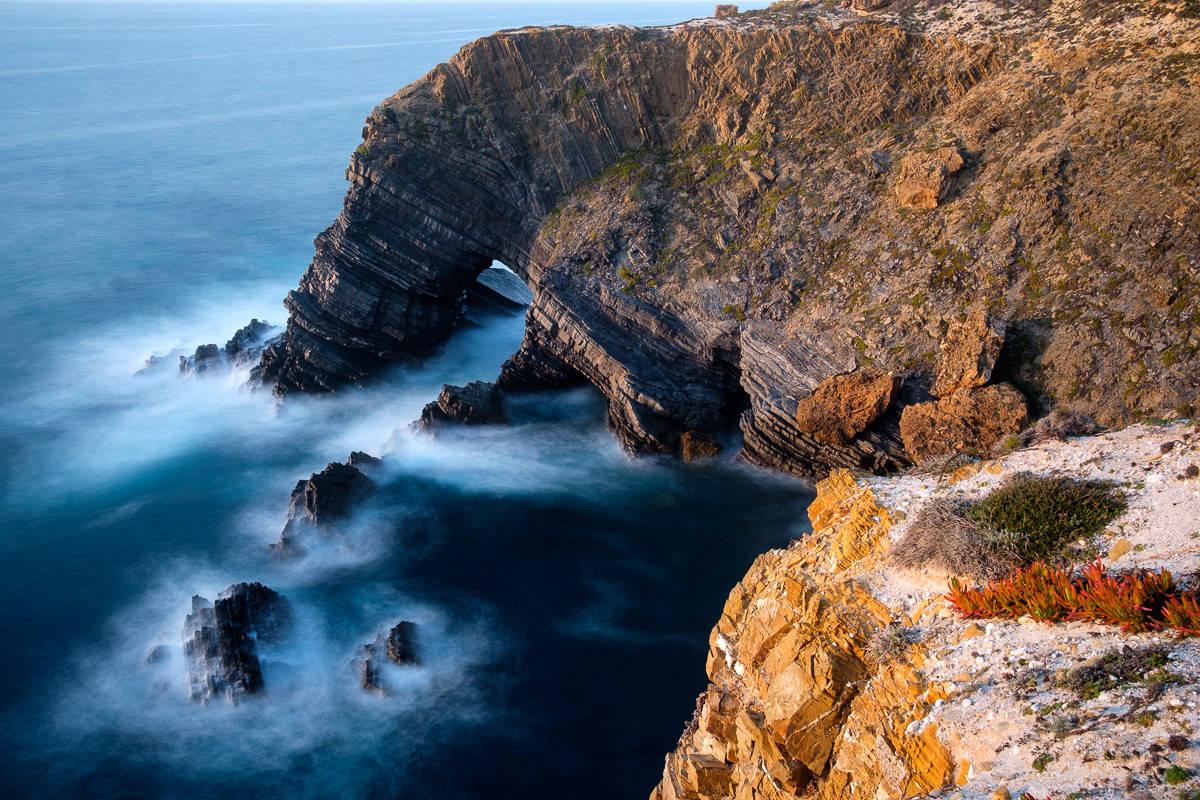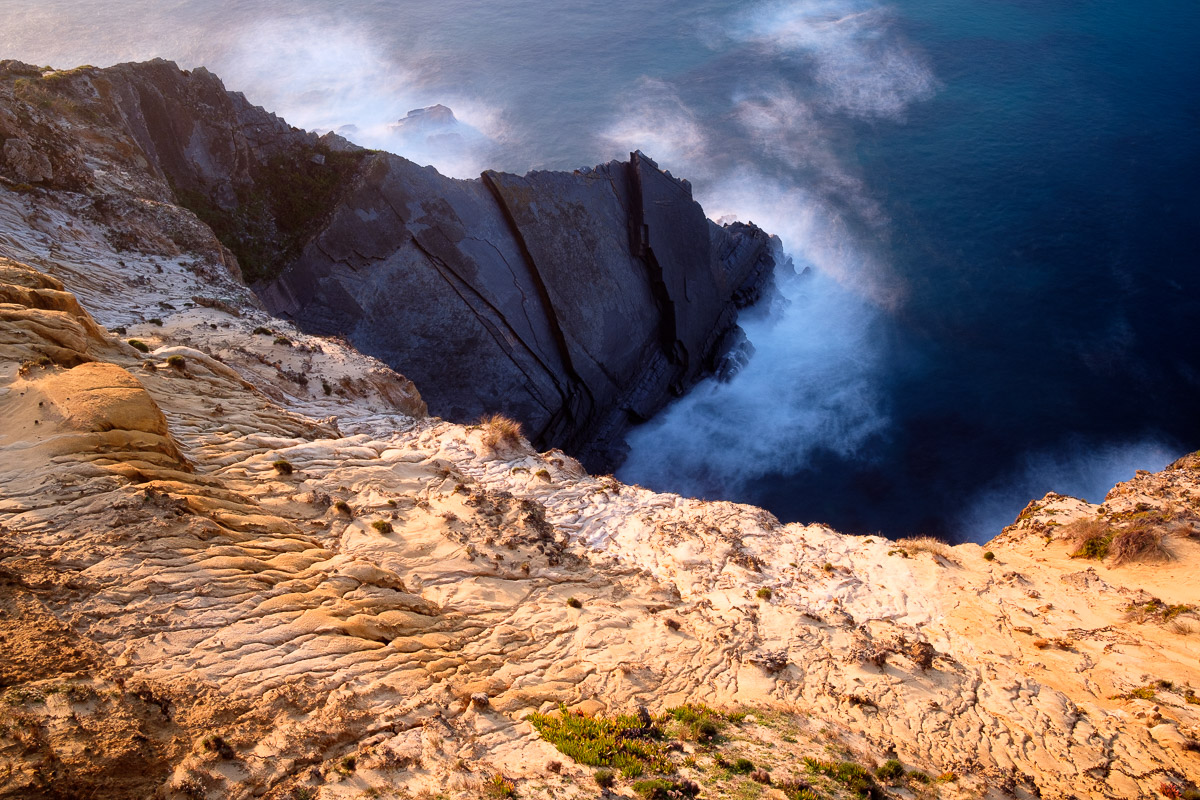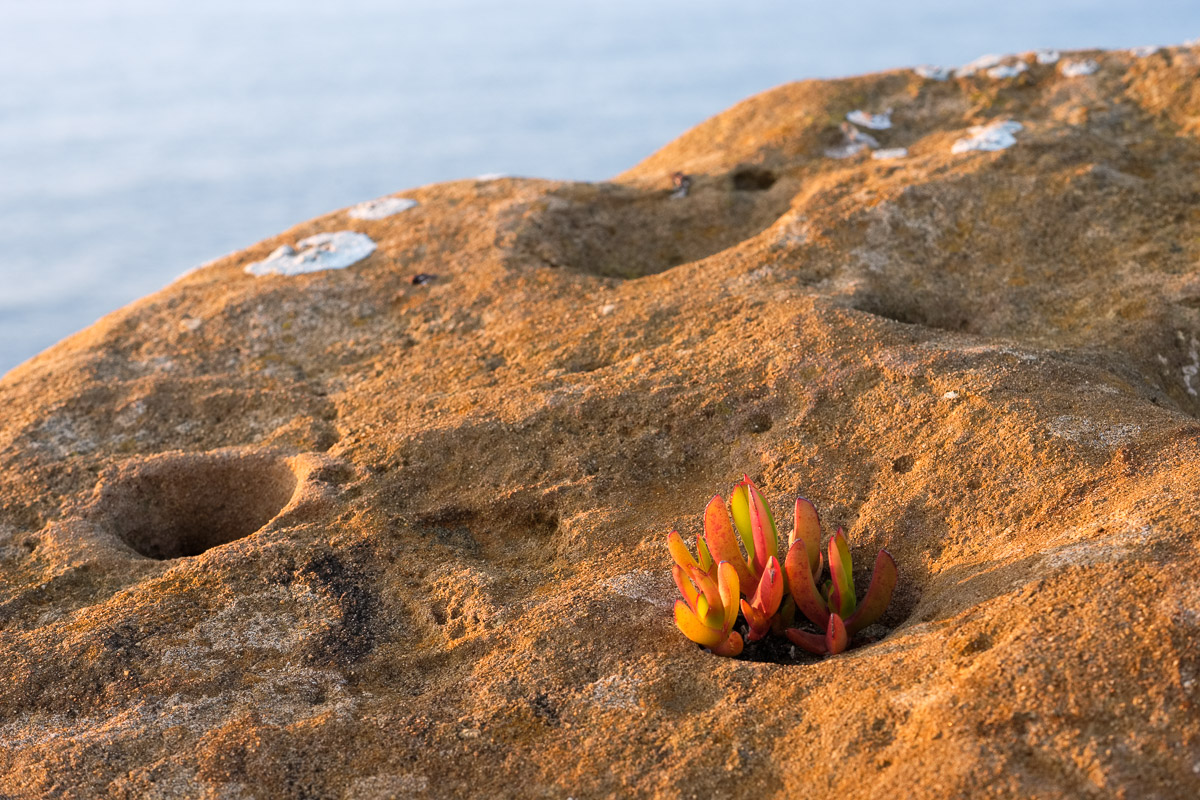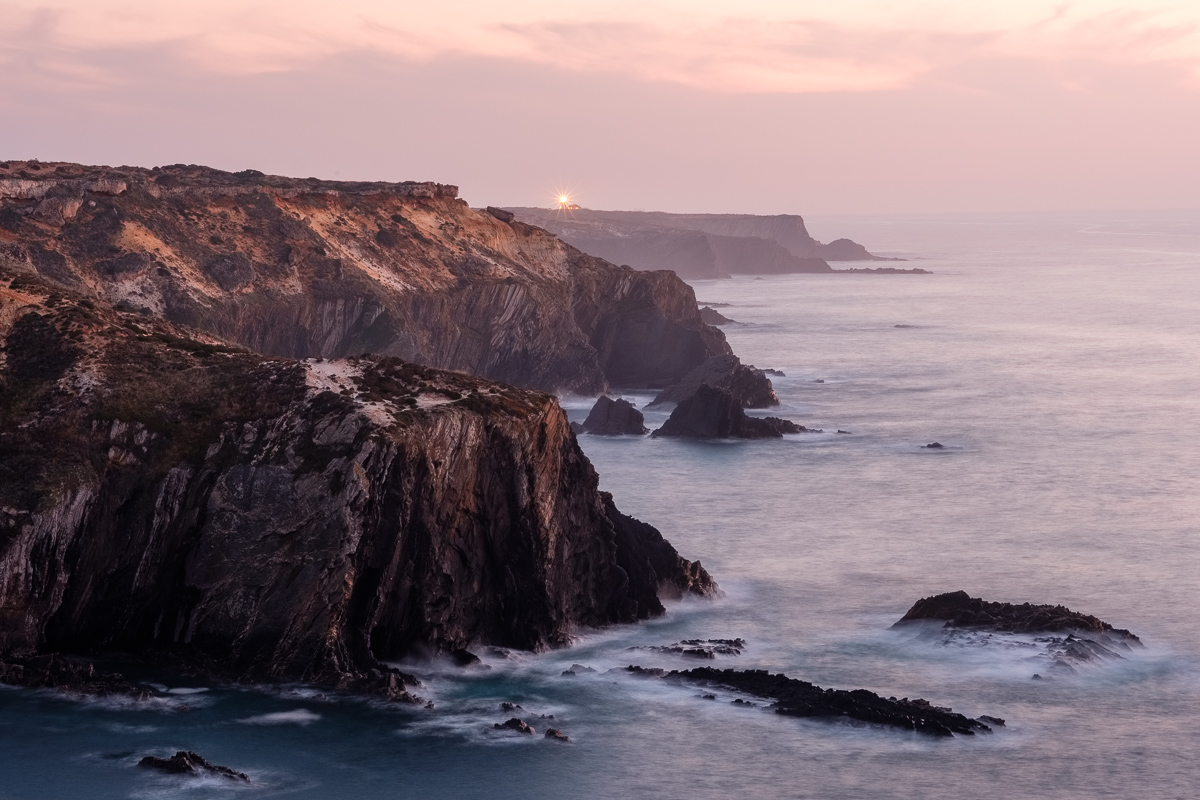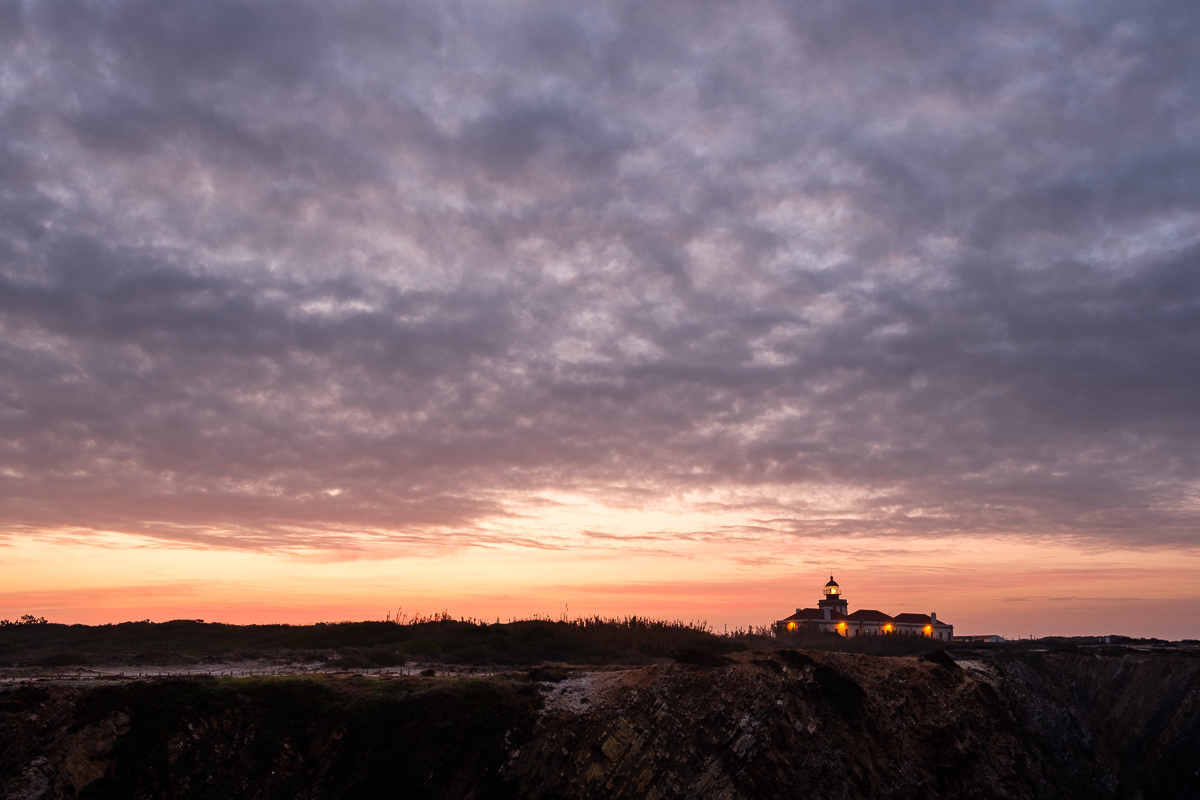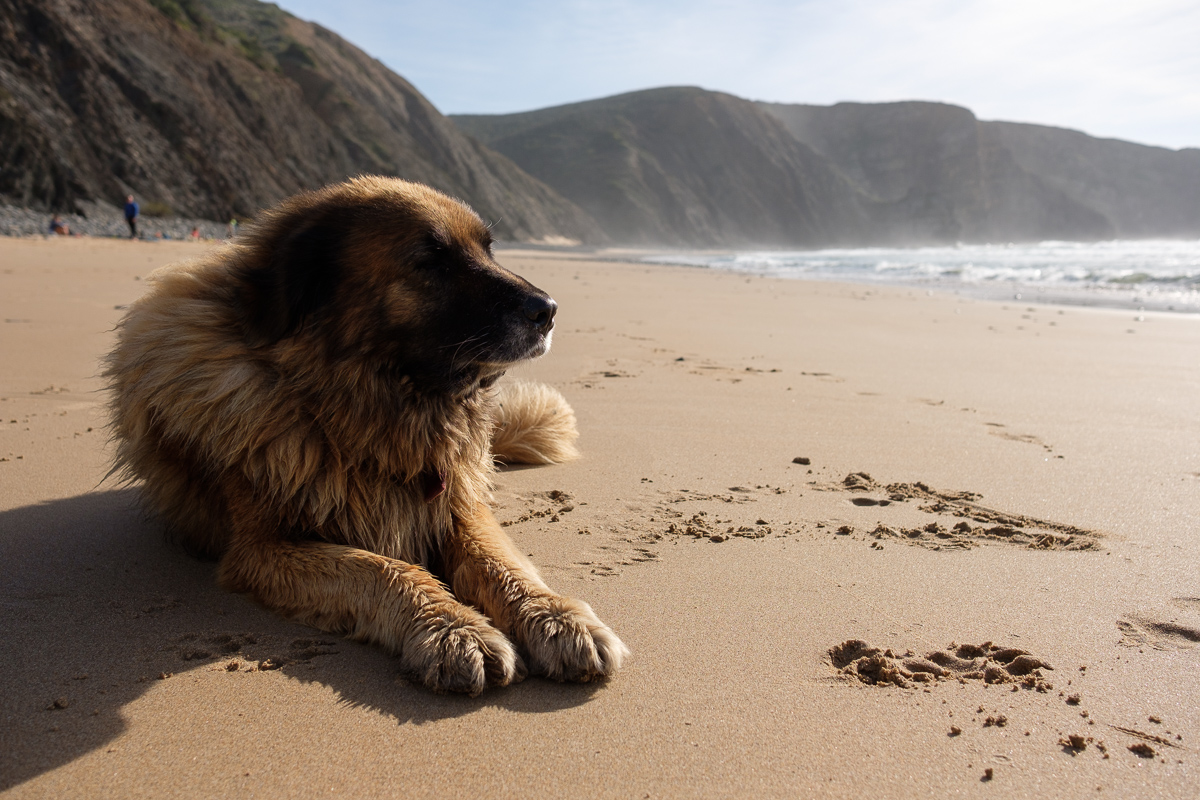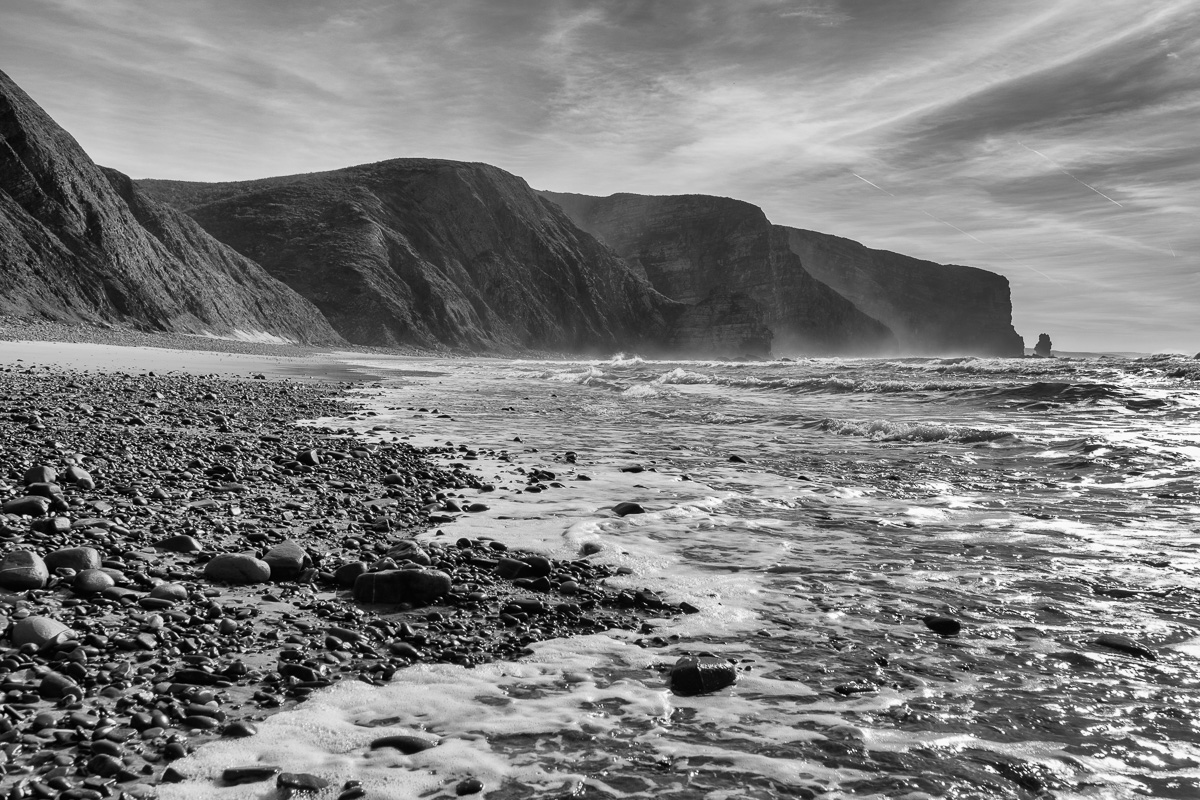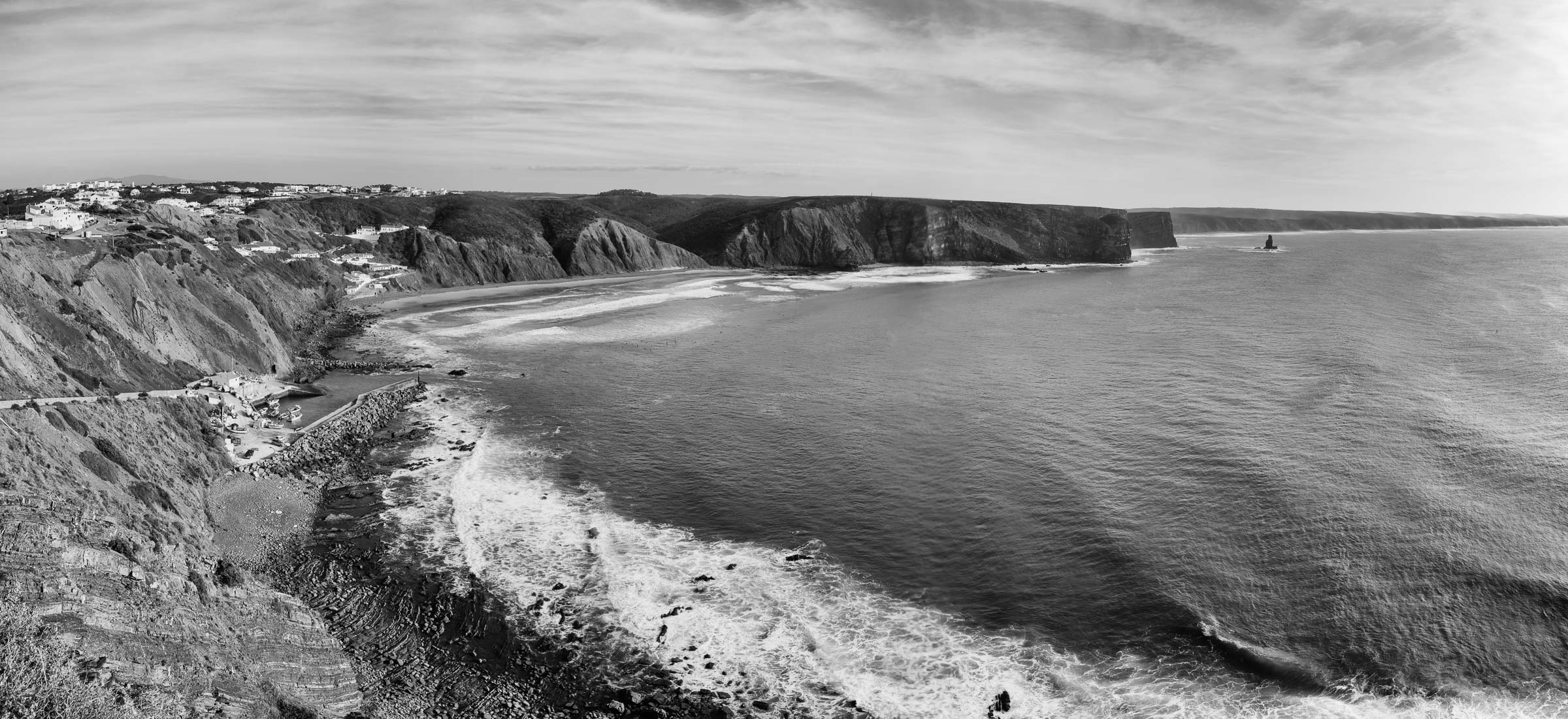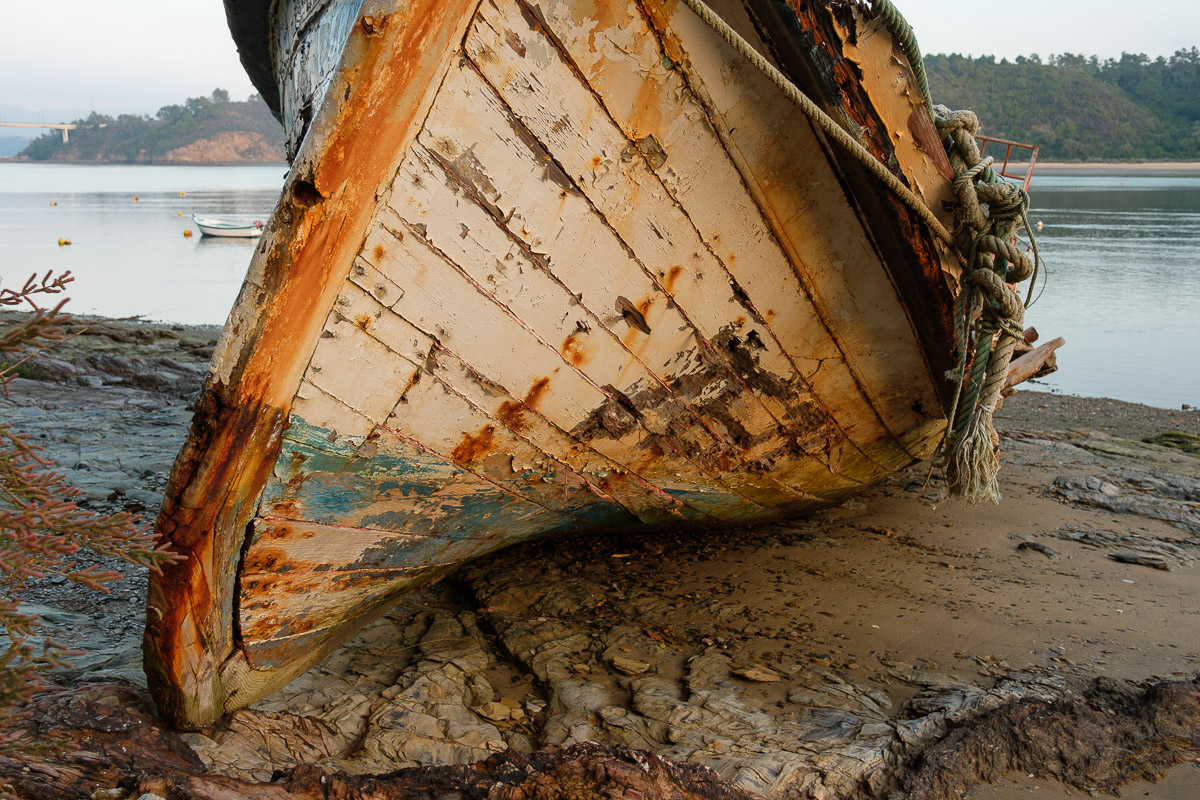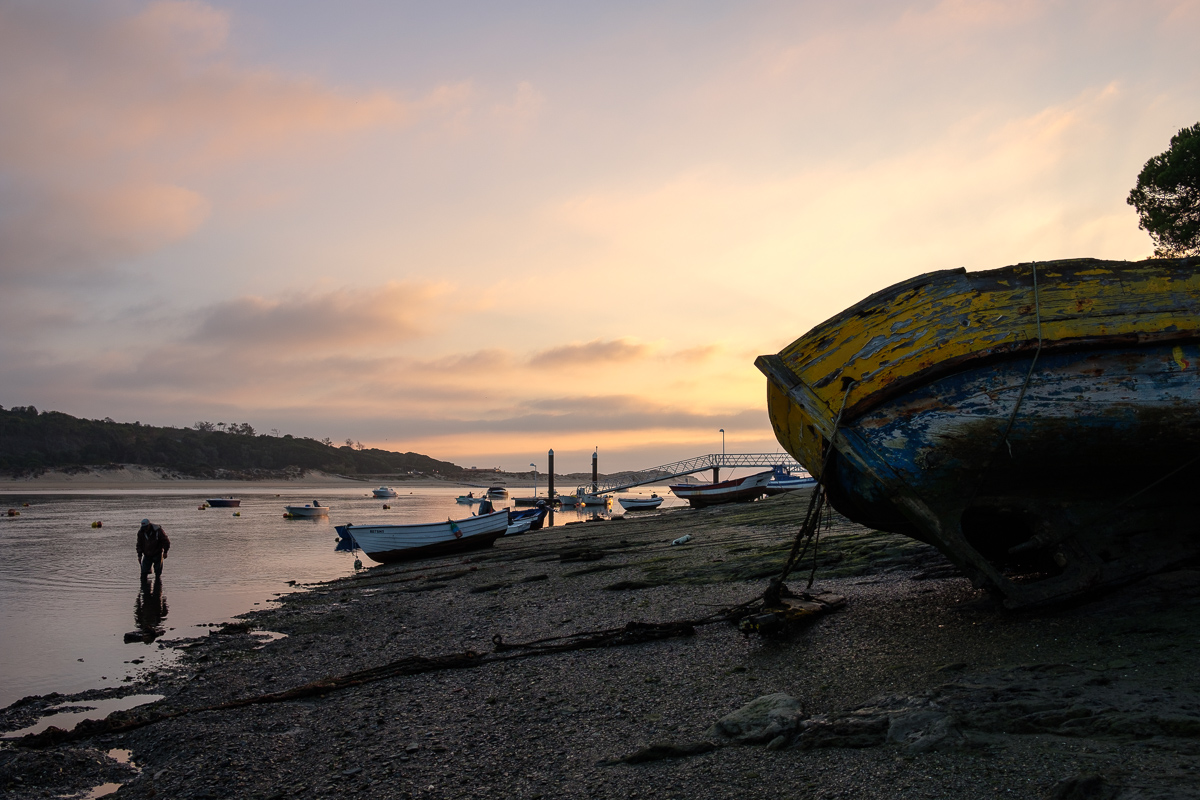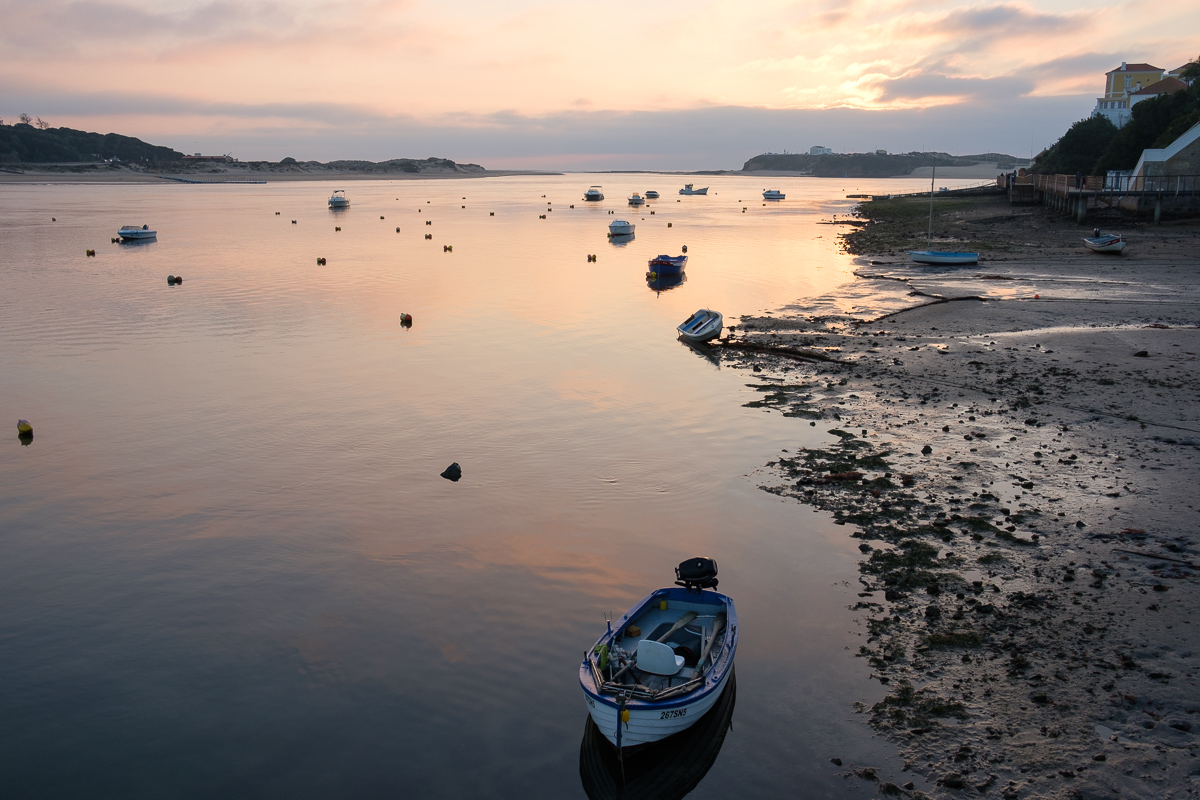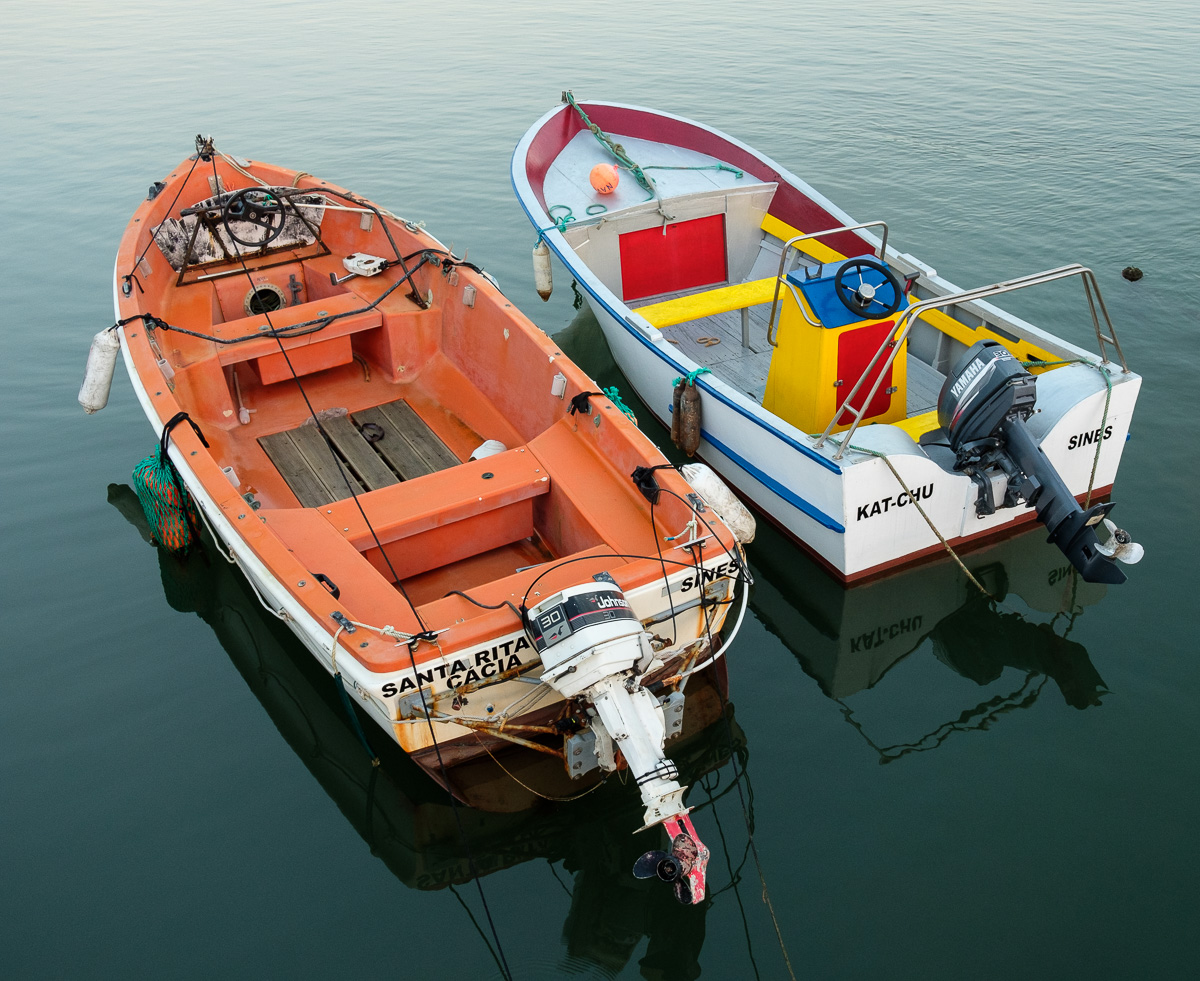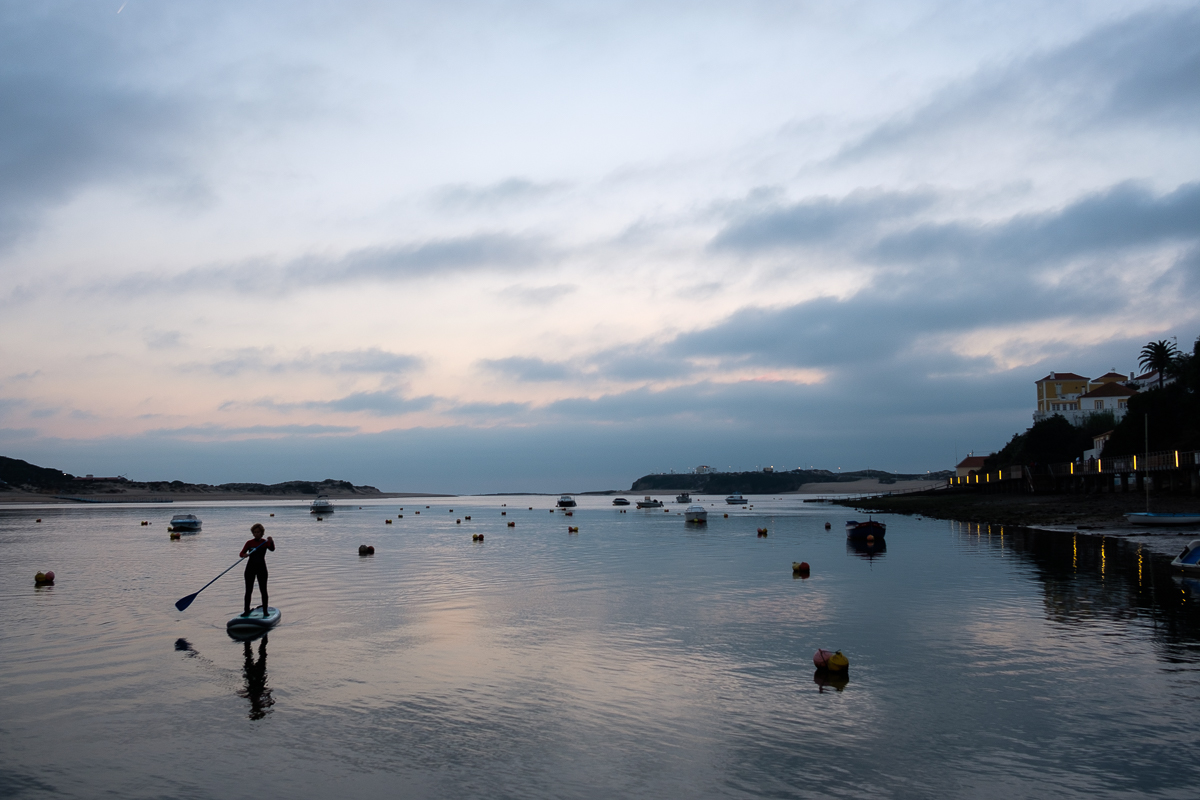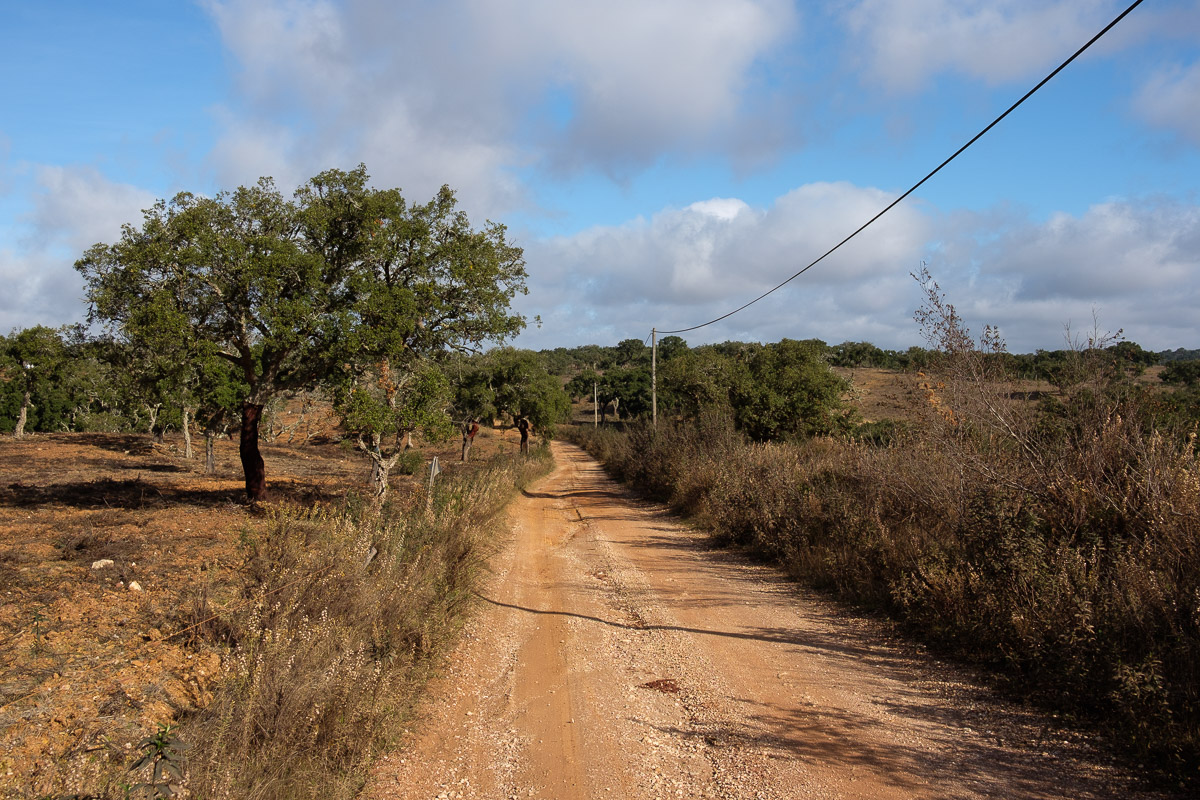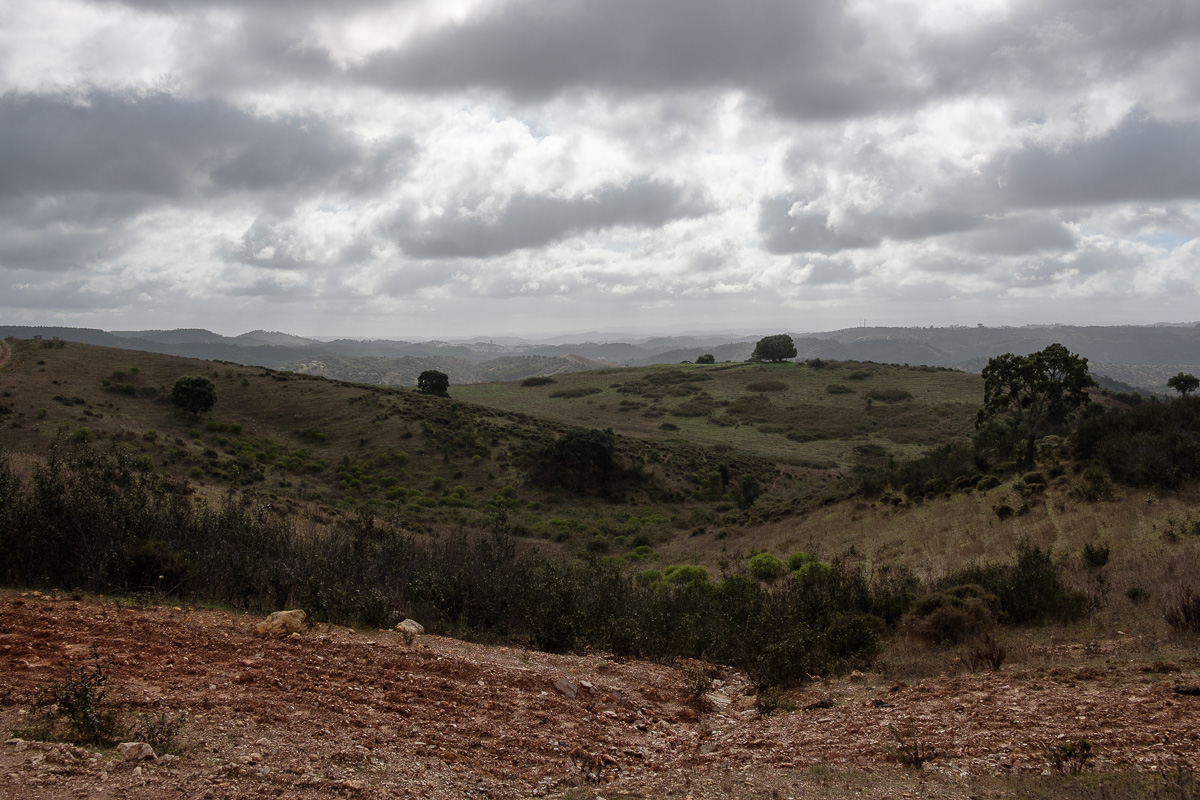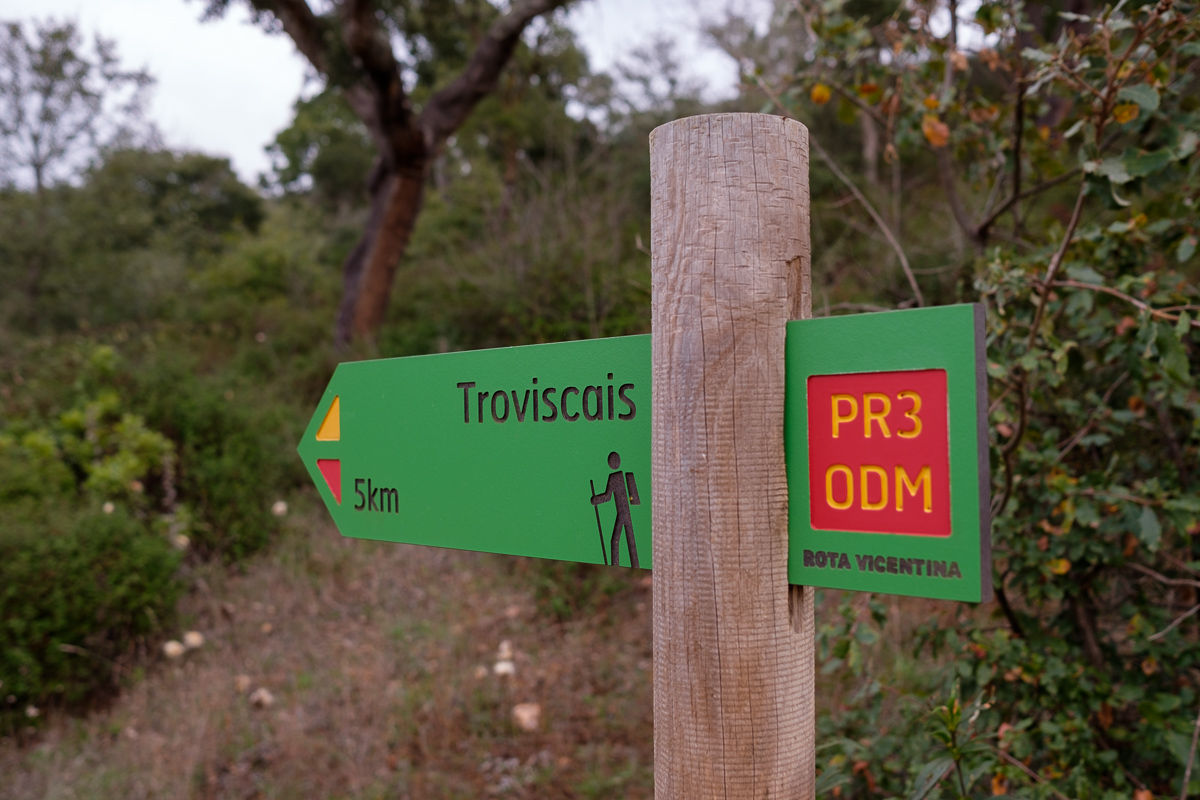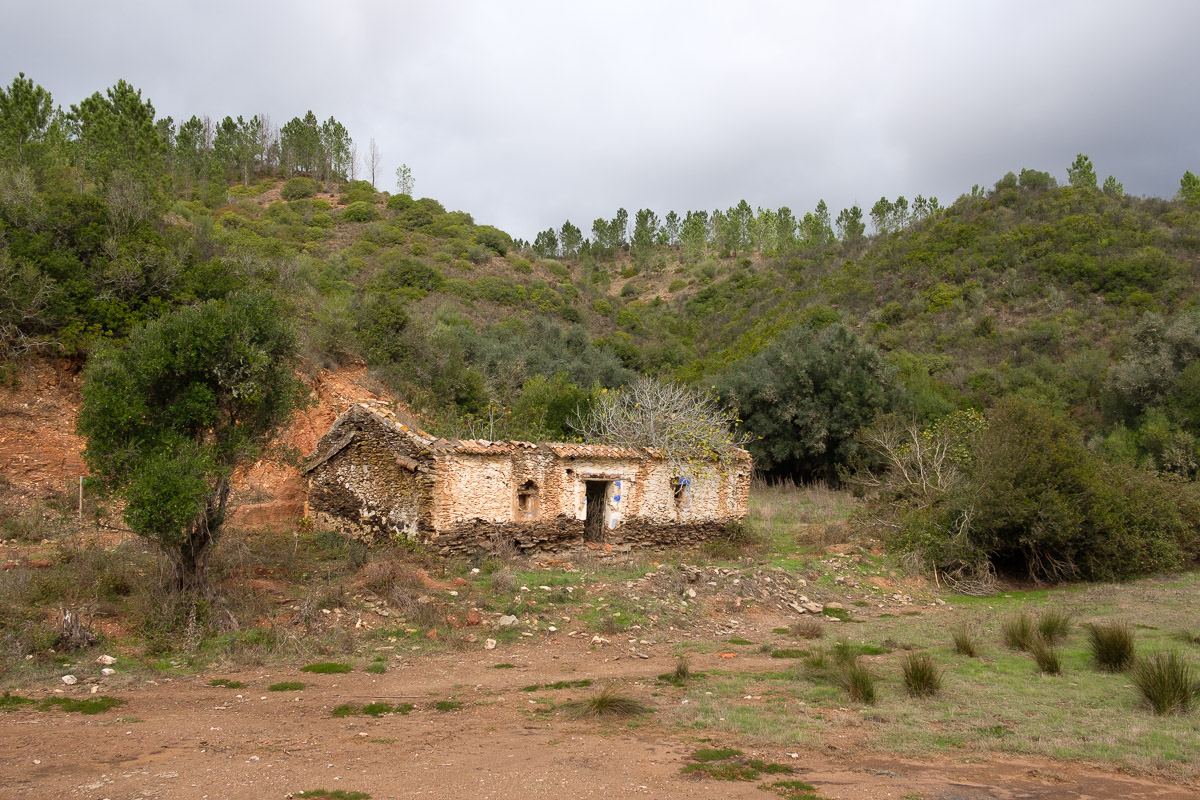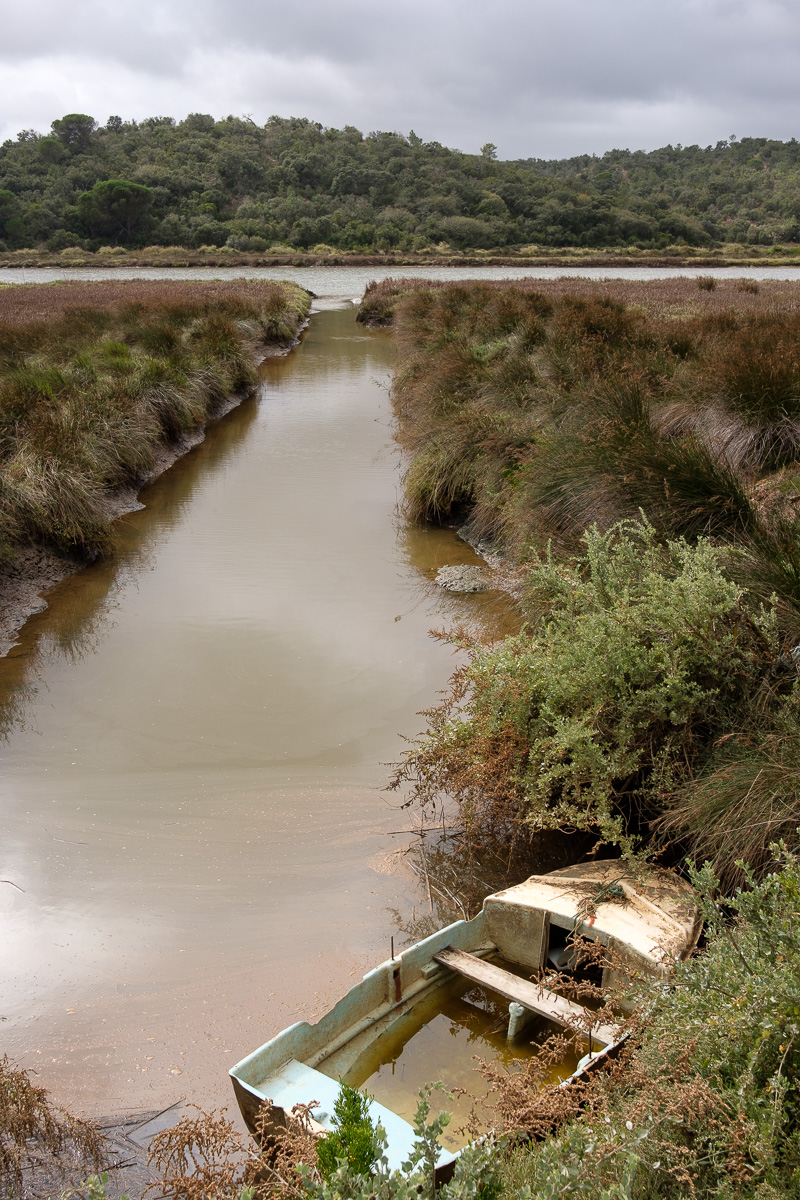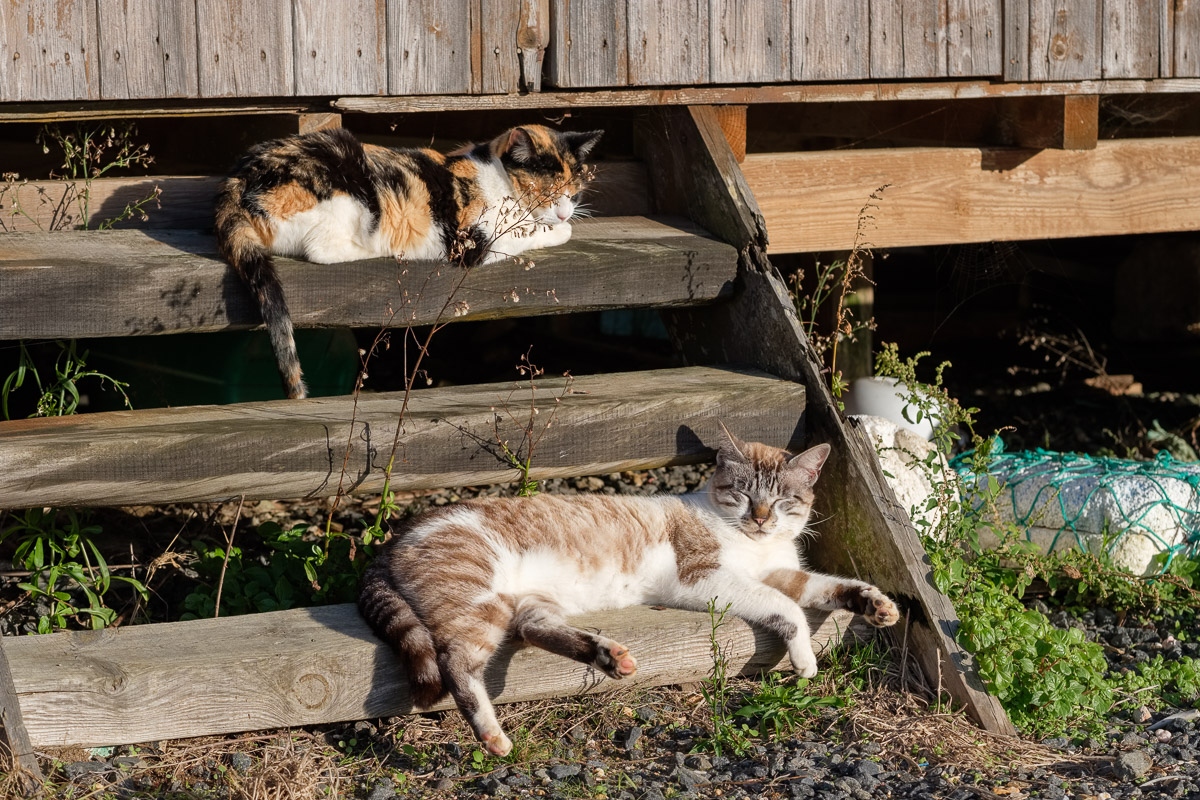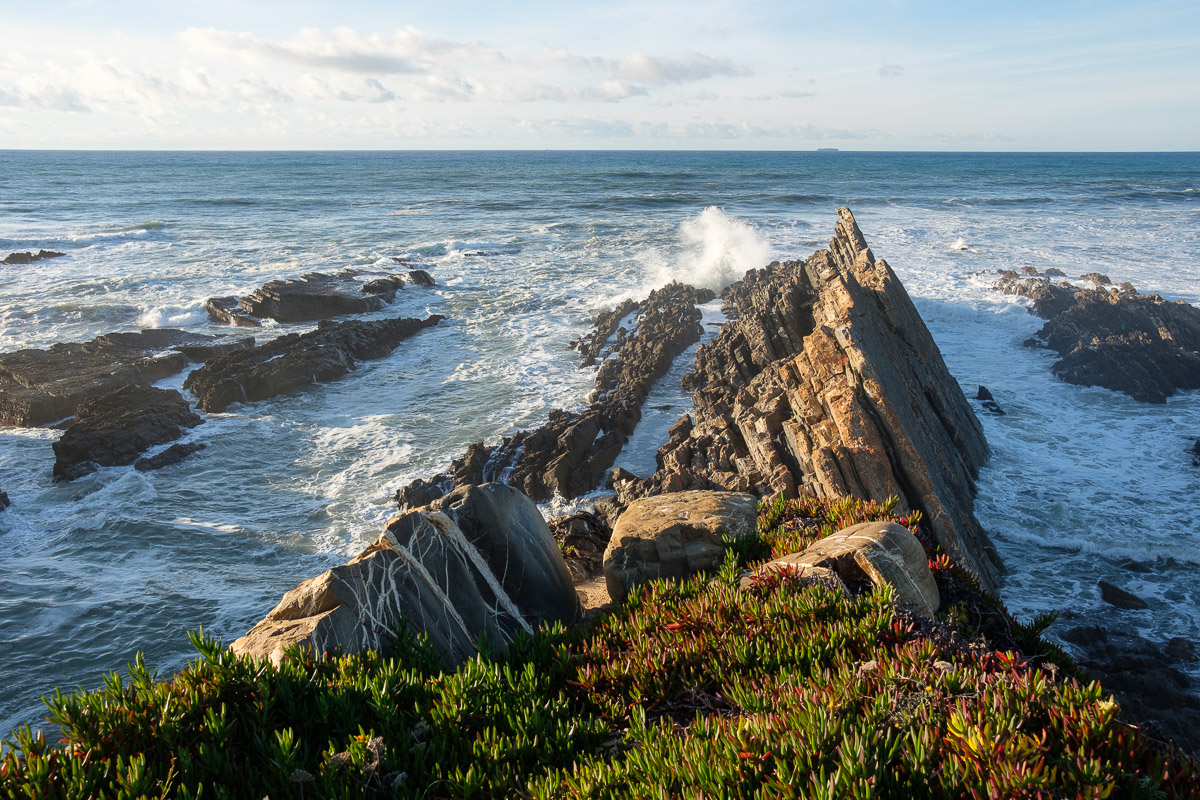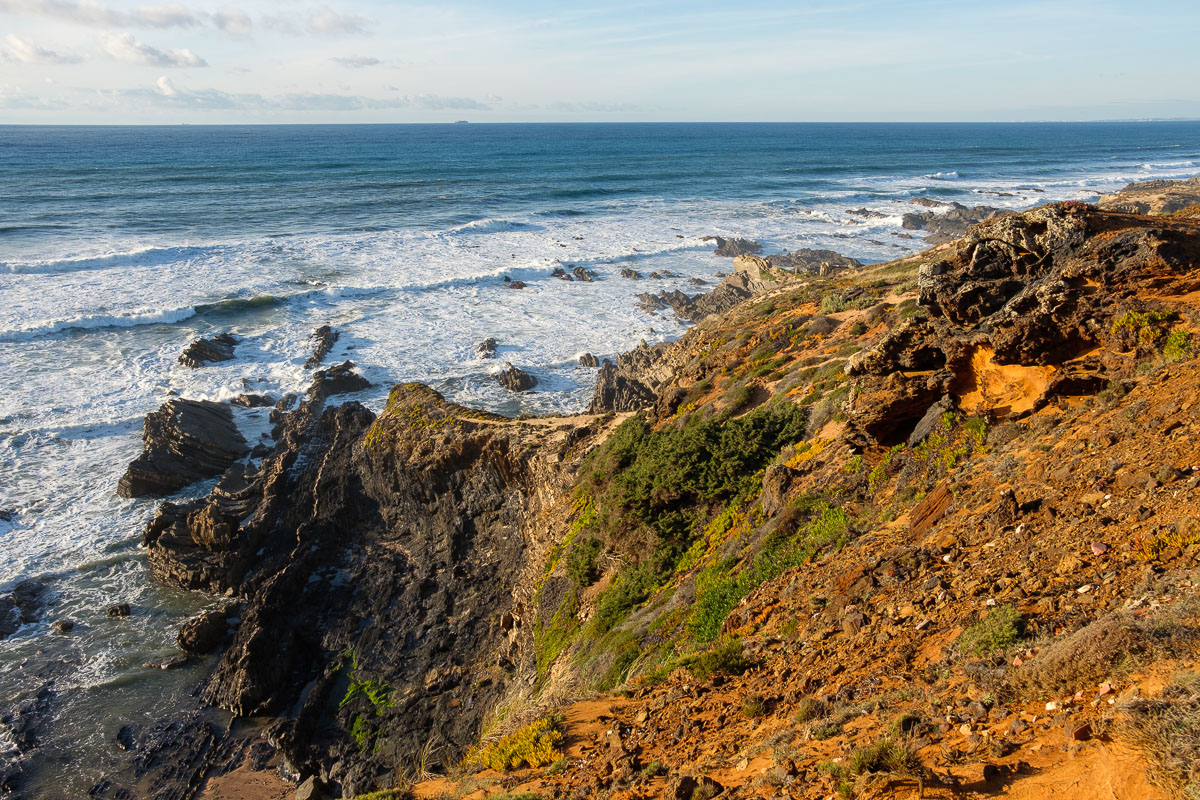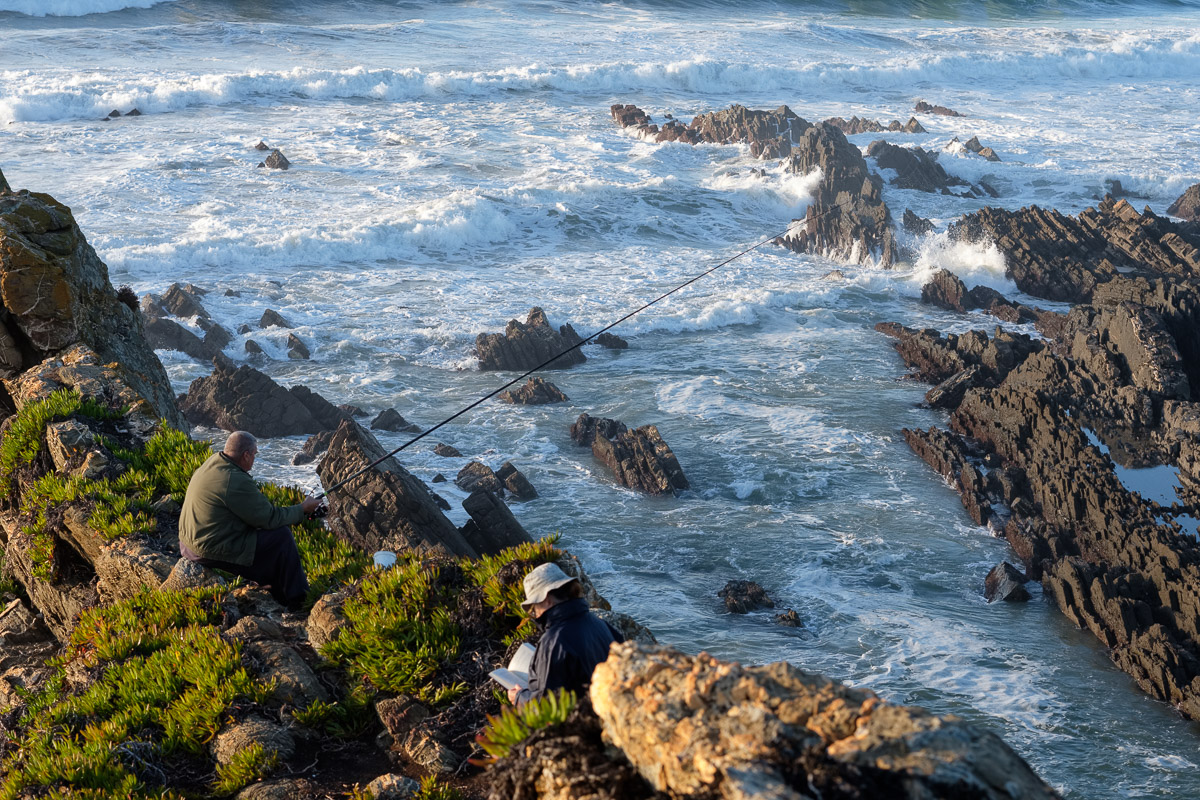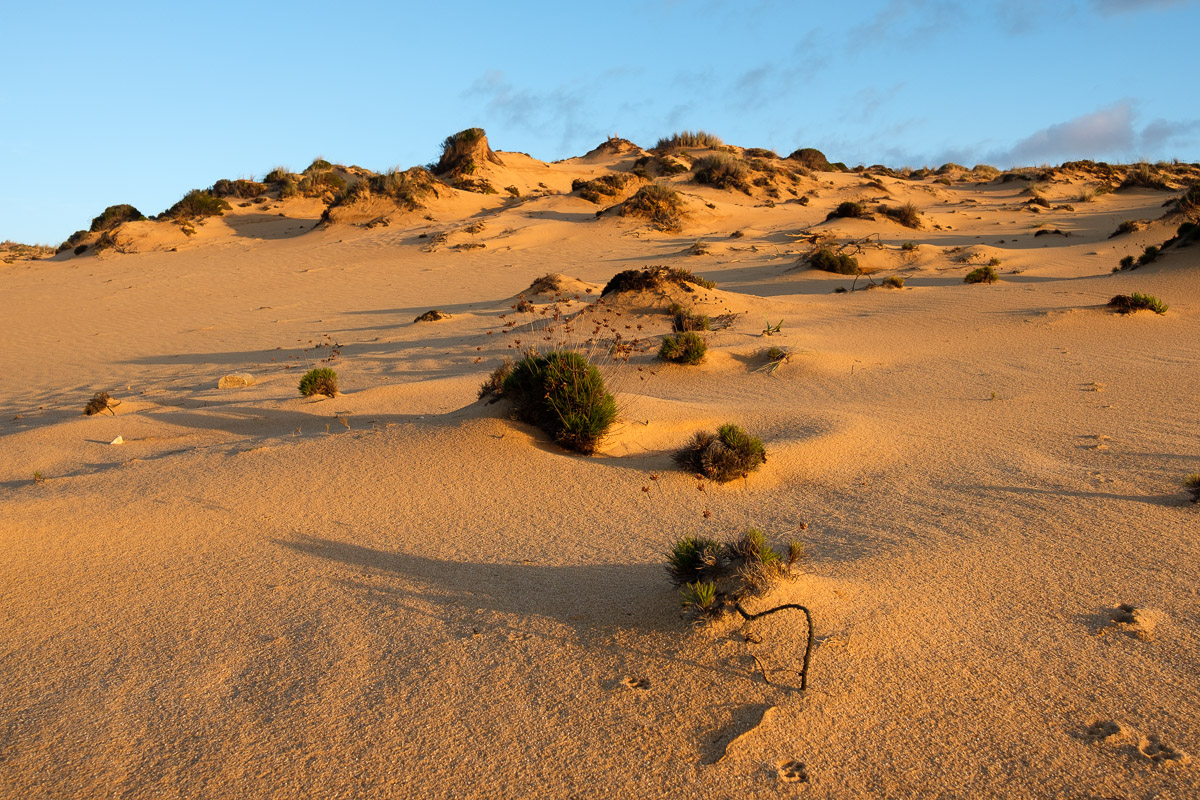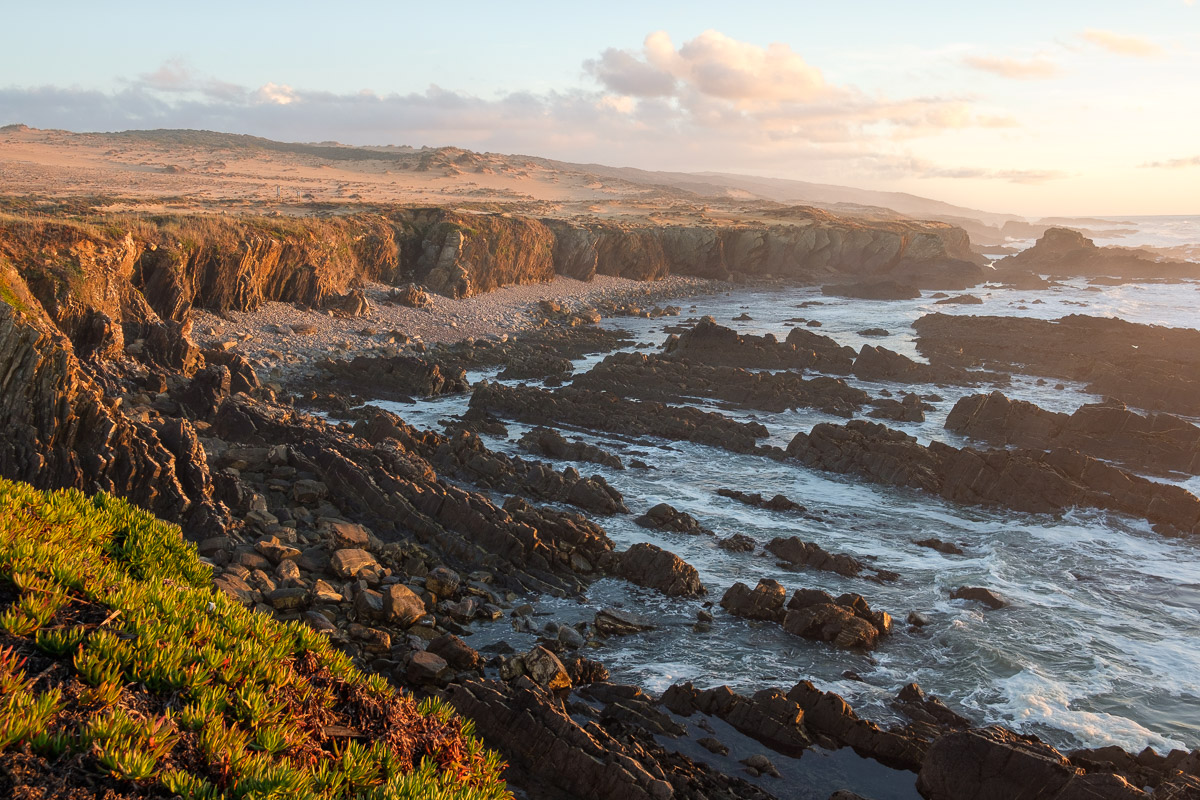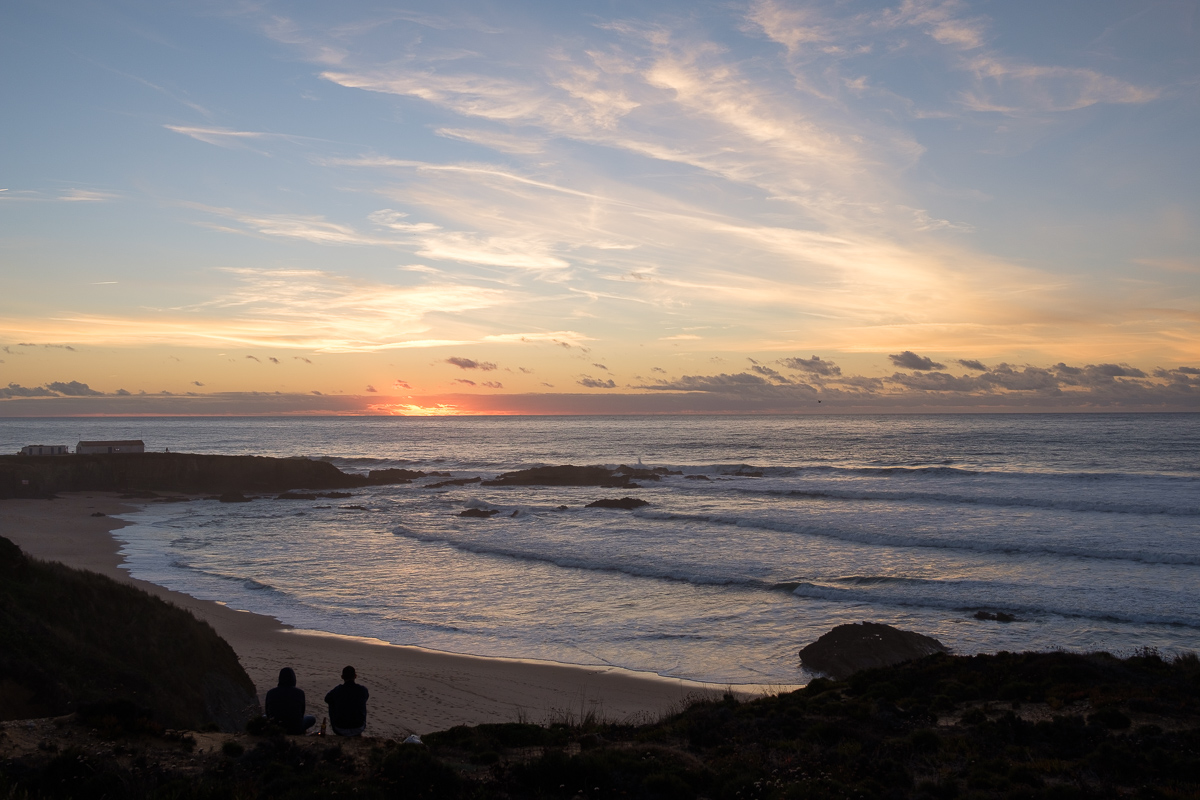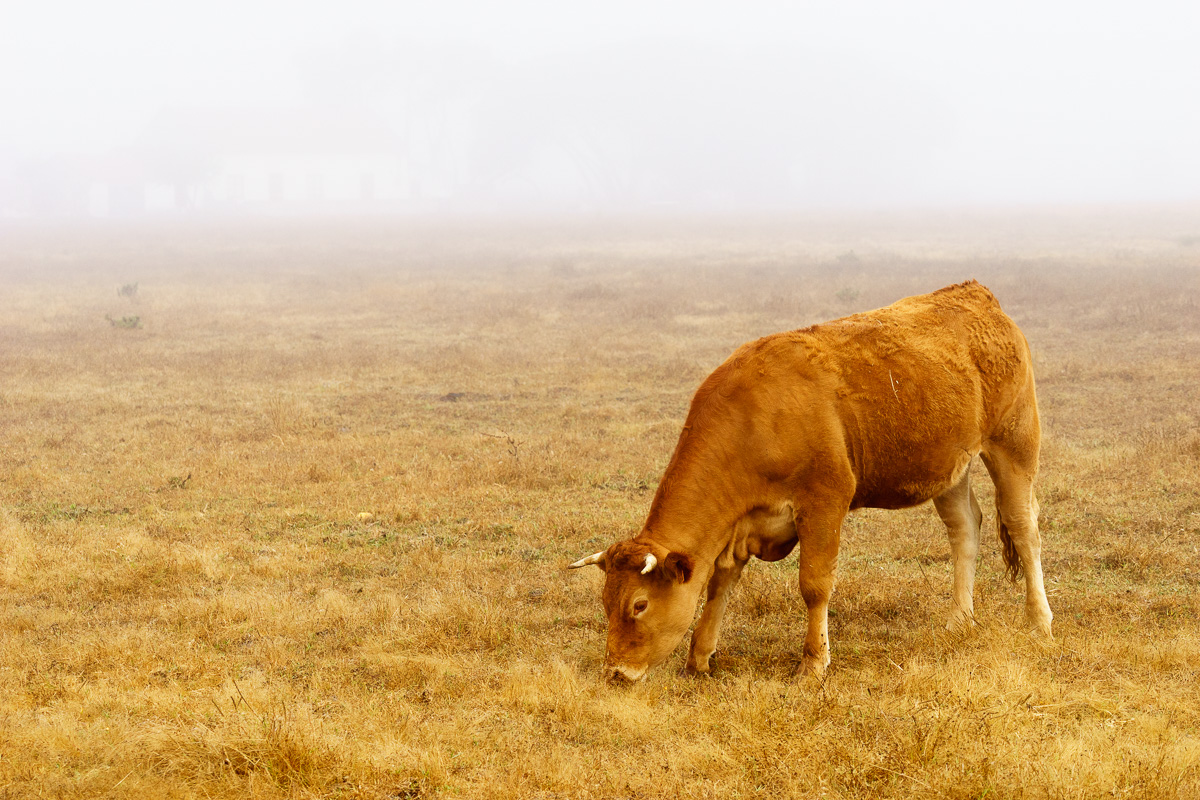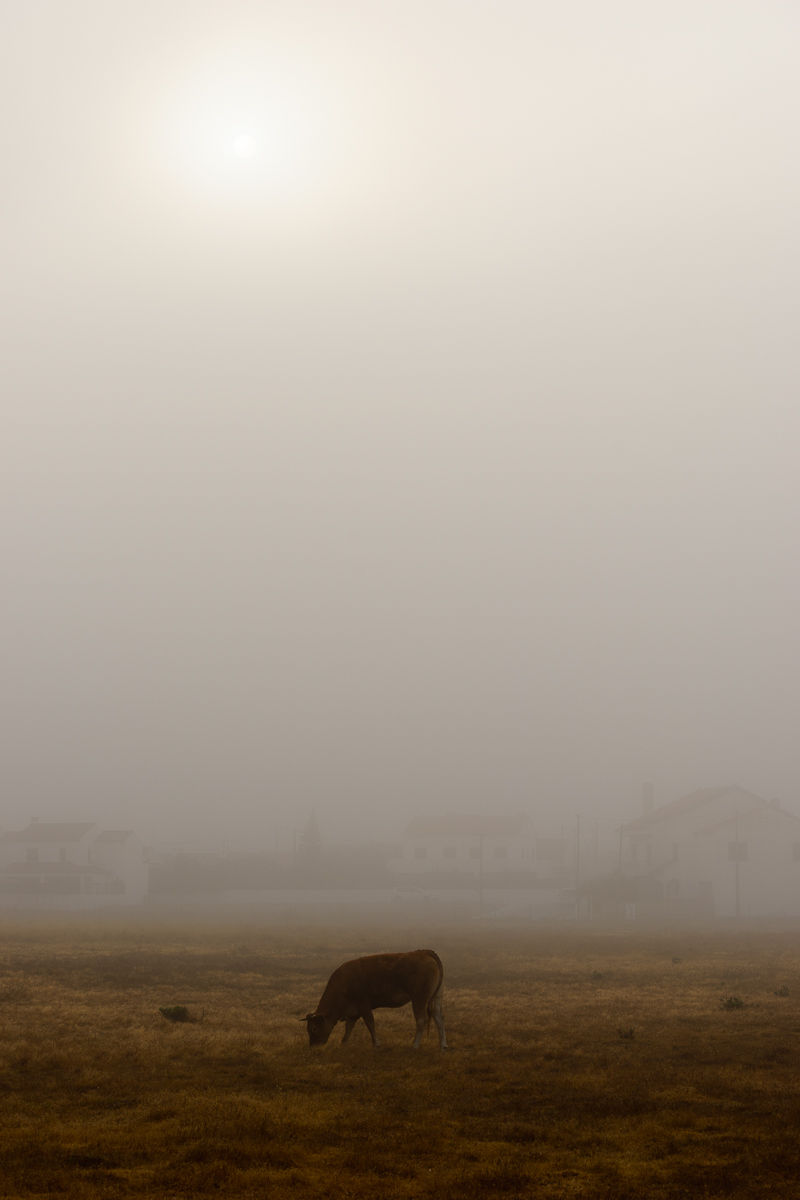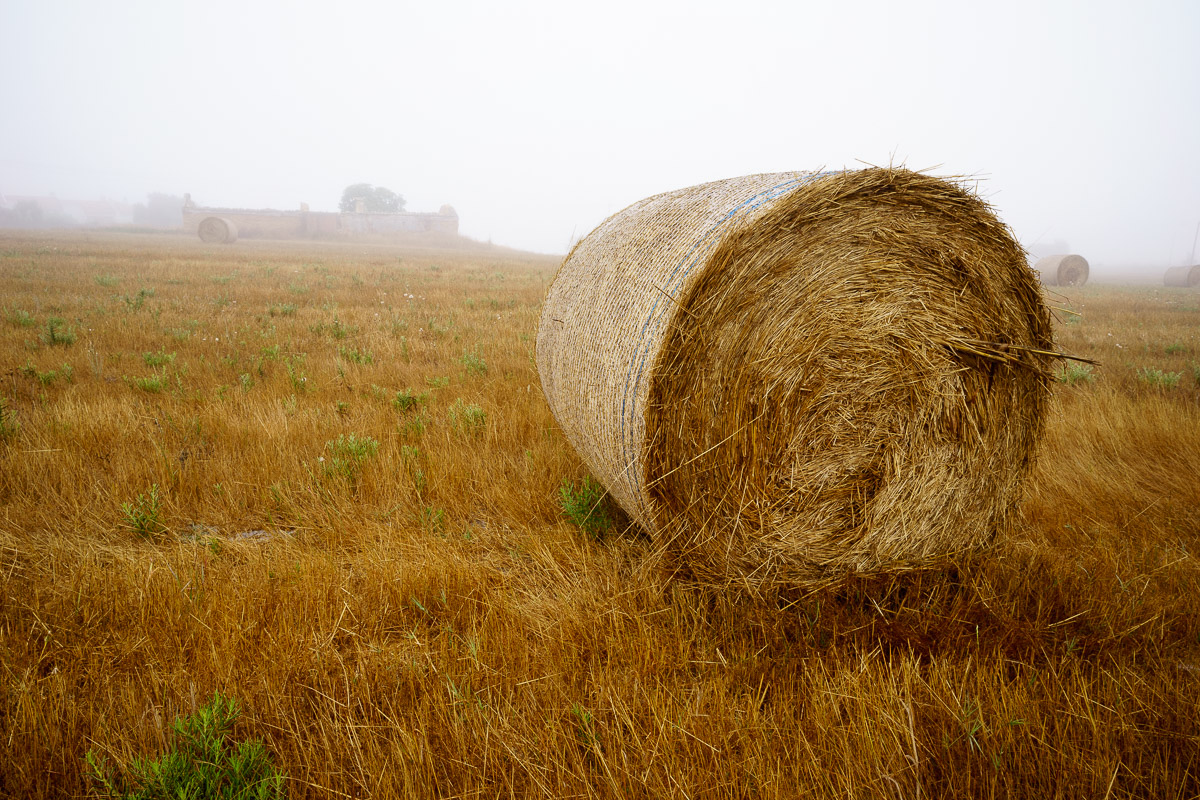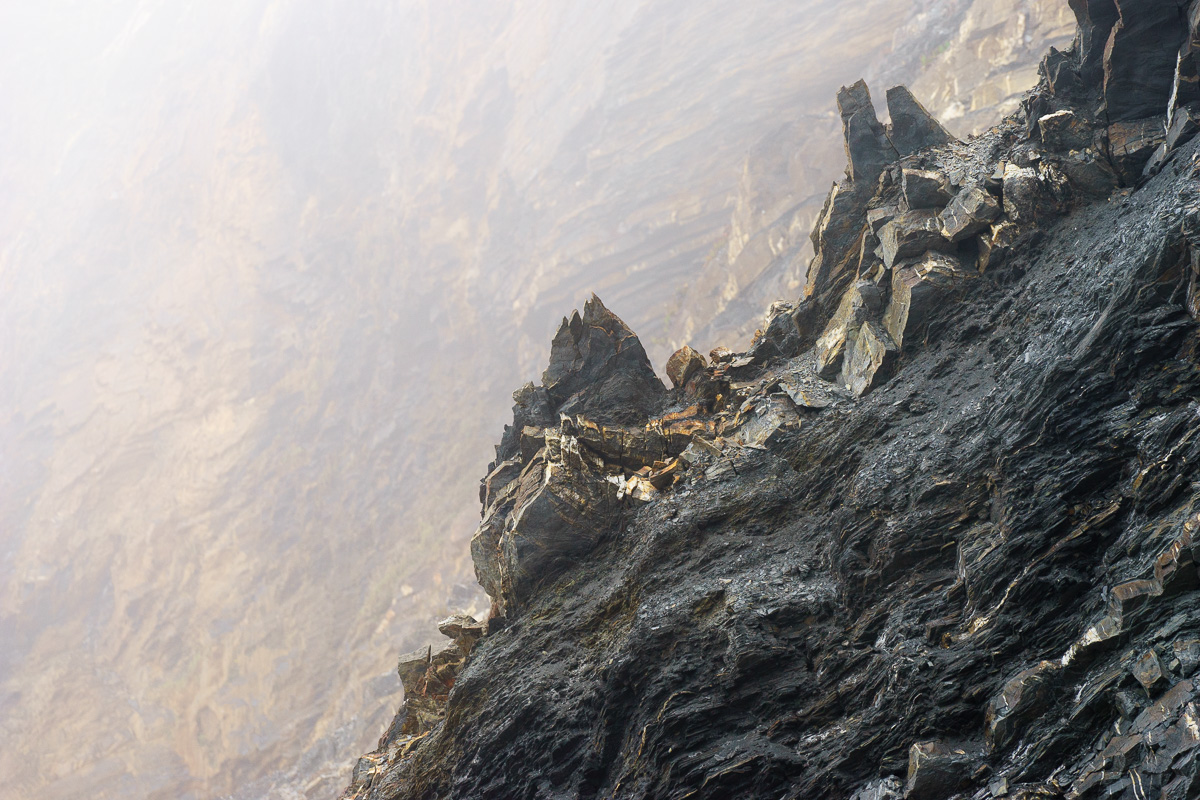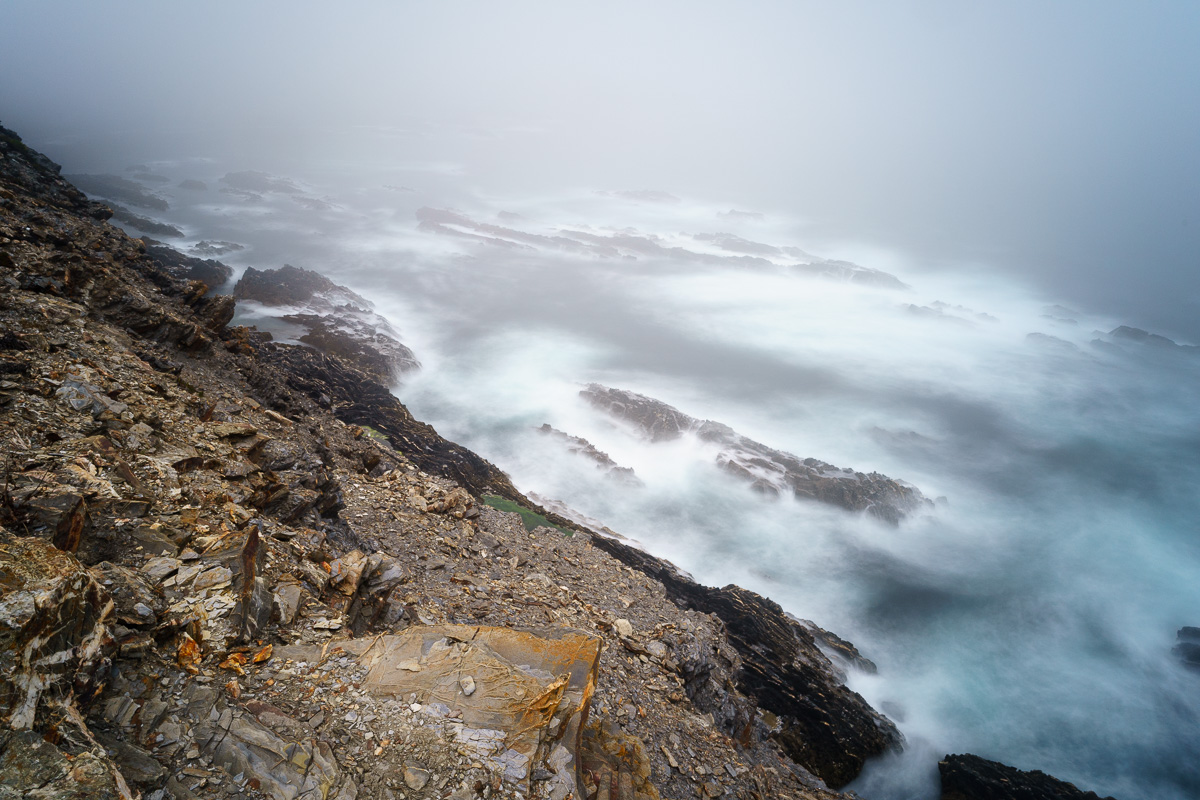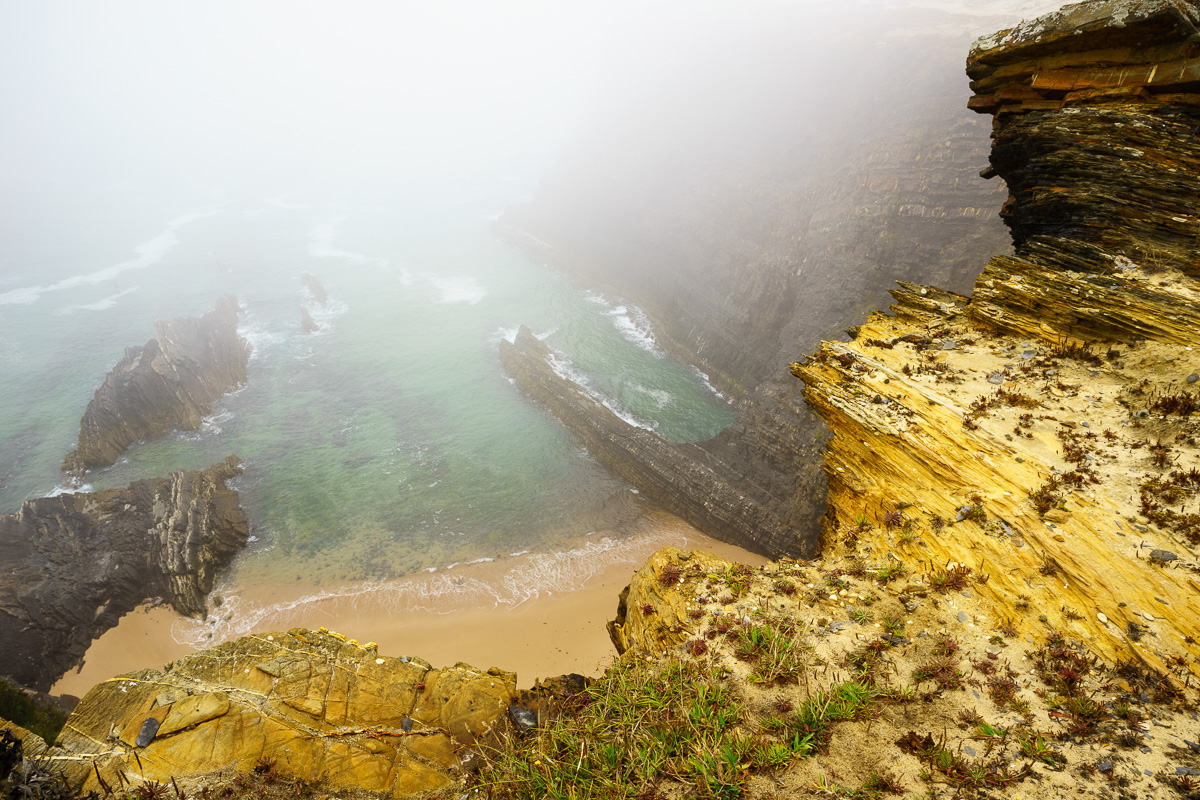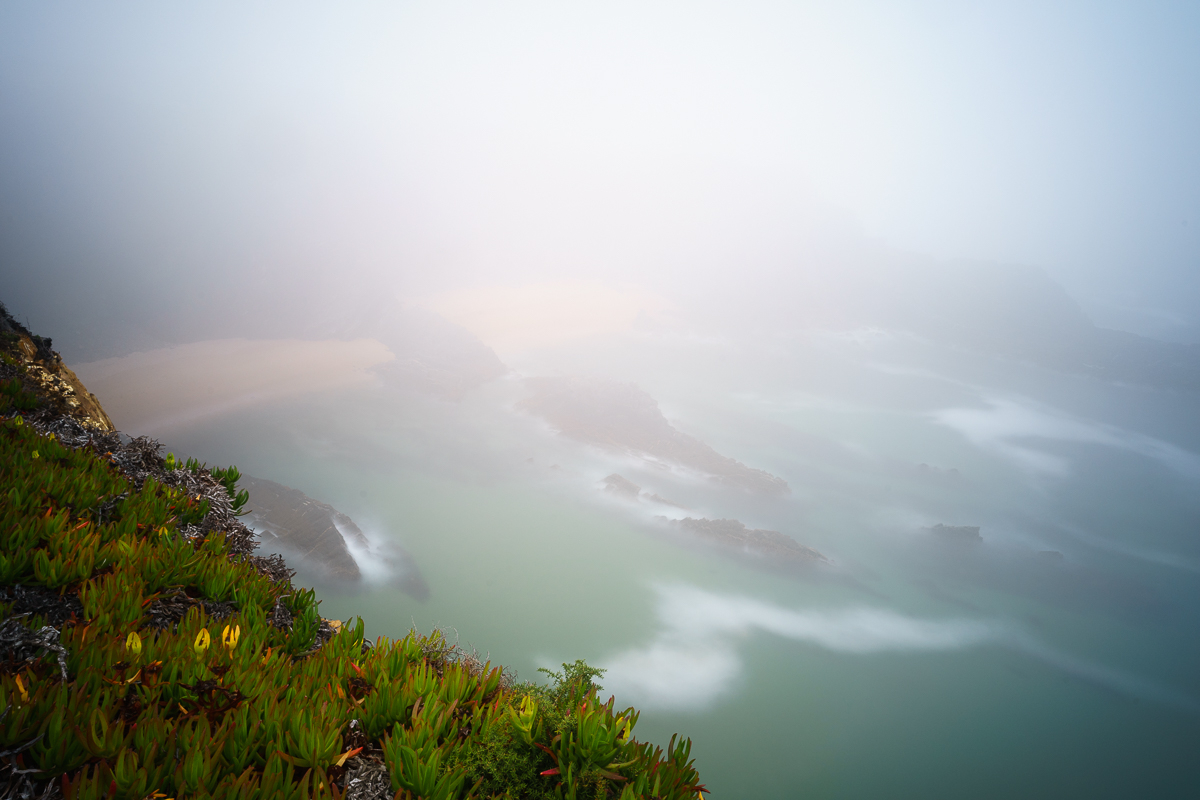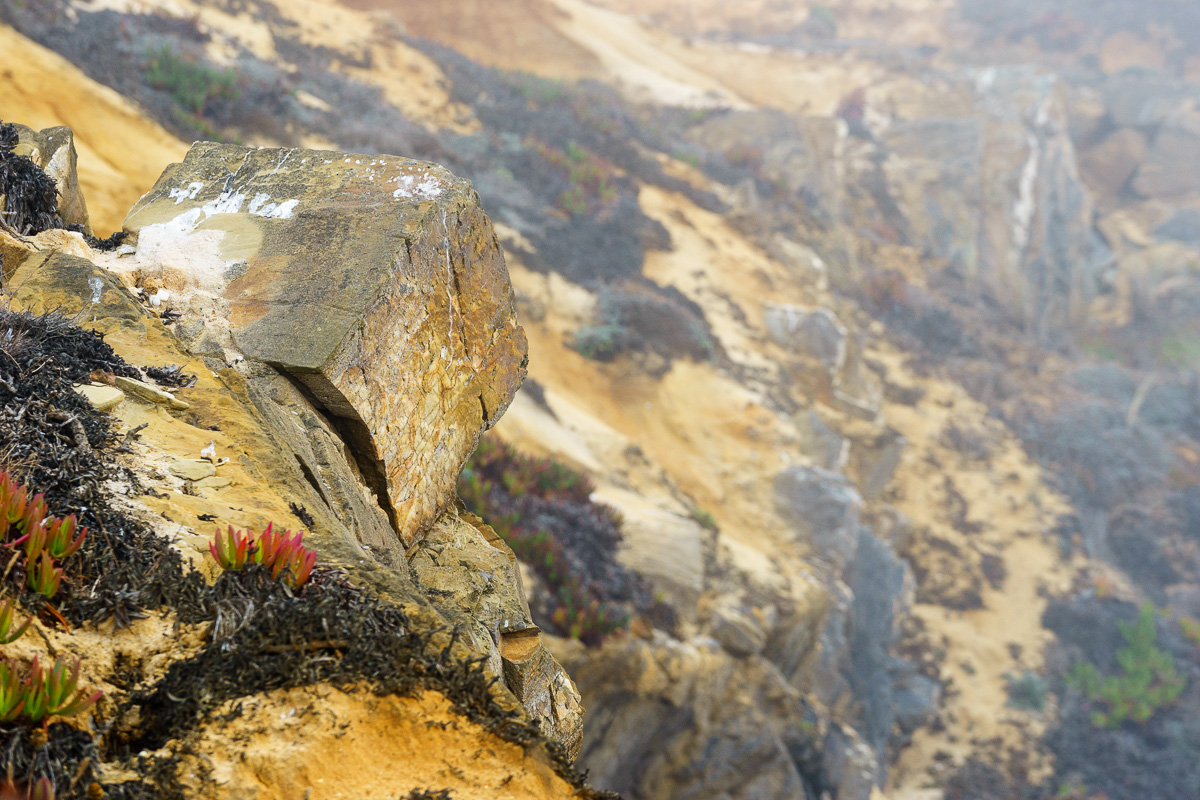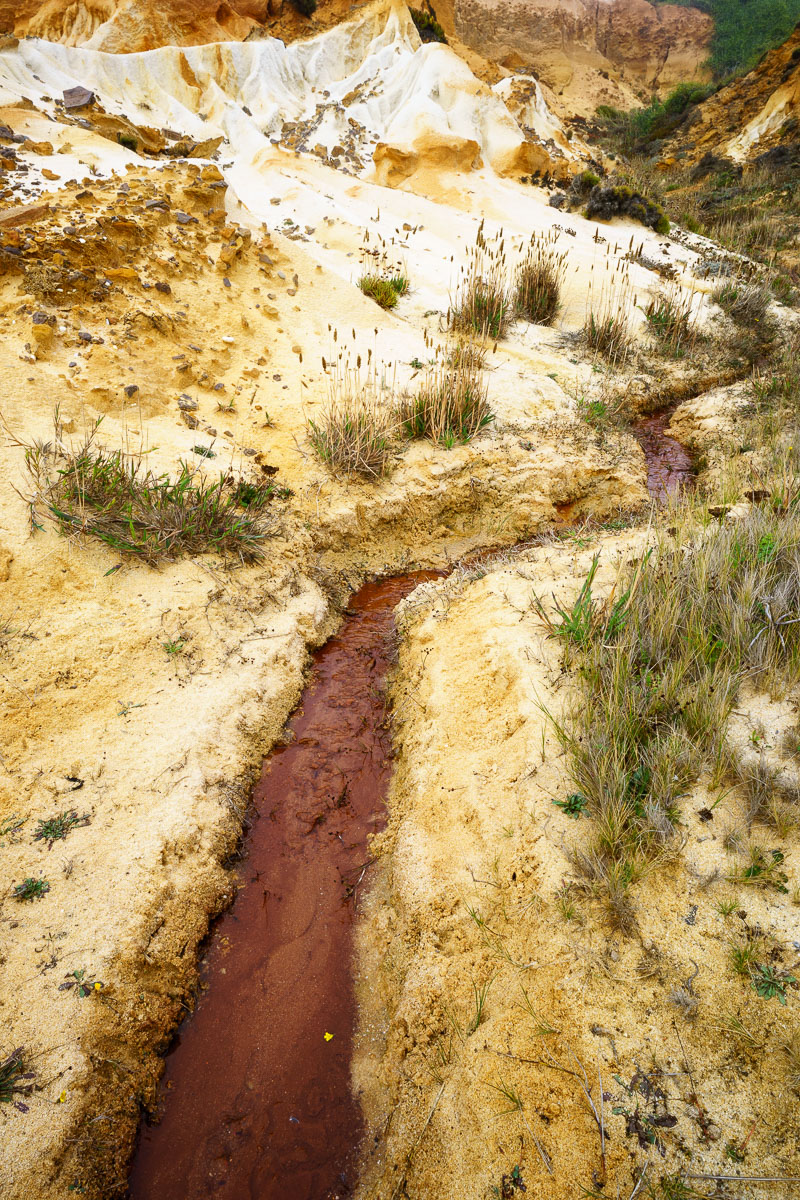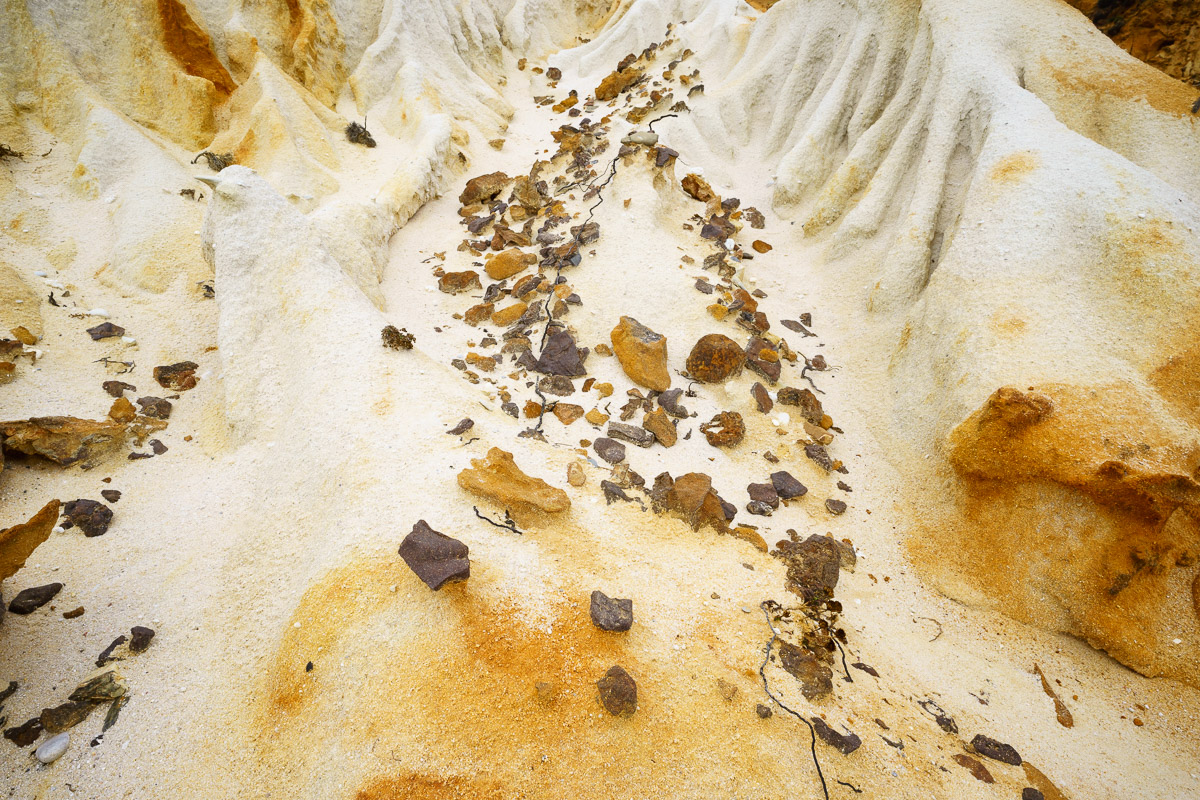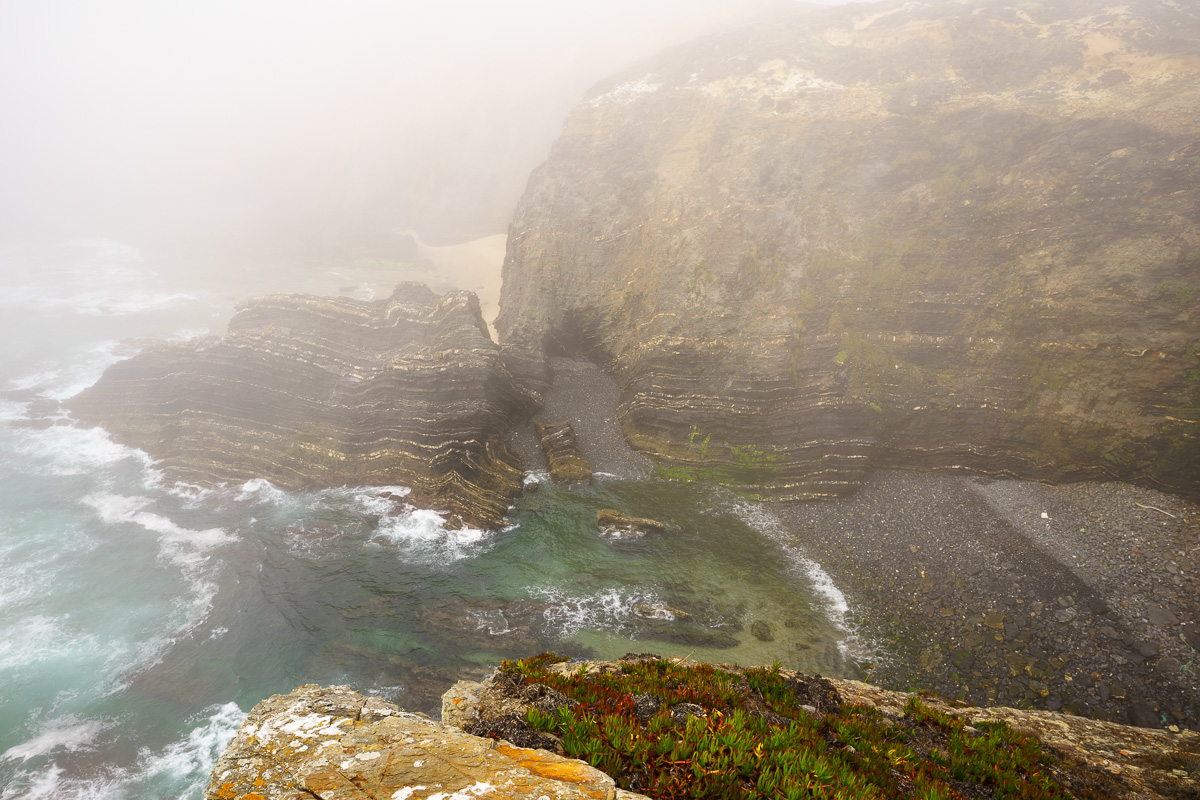Spring has finally arrived, bringing with it longer days, more sunshine, and lots of flower covered fields. In my recent weekend visits to Longueira and Almograve, I have kept an eye out for one of my favourite Spring photographic subjects – poppies. This flower can impart a very special character to any area, sprinkling the fields with small red dots. Every year they seem to appear in different parts of the region, with stronger or weaker presence.
Last year, I remember sawing them in a good number quite close to Odemira. This year, the best area I have seen so far is just before Milfontes, where there are many red poppies among the lupine fields. I noticed it whilst driving past; there they were right next to the road. A large tract of land covered with yellow lupine and the conspicuous red splashes of the poppies. I was elated to see this view, because just a mere days before this field was empty of such colour. Such is Spring, whimsical and surprising.
I made a mental note to plan and come back for an early morning shooting session in the next couple of days. I knew that the light at sunrise would be great over this area, bathing the flowers in golden light. I also knew that I would have to return relatively quickly, because poppies are fragile – their petals do not resist stronger winds or showers, which had been abundant recently. It is a good thing that I do not mind (very much) to wake up well before sunrise…
Thus, one morning I packed up my photo backpack plus tripod, and off I went. It is a short drive from my house in Longueira, and I really like the time of day before sunrise – Nature seems to be waking up, and the morning was clear with some clouds over the mountains, from where the Sun would rise. Excellent conditions for photography, with some clouds adding interest to the sky. After arriving, I strolled into the fields looking for nice compositions, making the most of side light and contre jour conditions. I had decided to bring only a couple a lenses in my Fujifilm X system; the 14mm wide angle, and the 50-140mm telephoto zoom. The former would be able to frame the typical wide vistas of the landscape, whereas the latter would allow flexibility and some close-ups. To add a bit more versatility, I had also packed an old Canon 250D close-up lens, to use on the zoom. This significantly increases the magnification (up to around 0.25X), which is nice for semi-macro shooting.
I started shooting before sunrise, when the light was still low, just to experiment and explore the surroundings and subjects. The light became much more interesting when the Sun started to crest the mountains in the East; I started to shoot faster, trying to make the most of it. As I was close to the road, I must have made a strange spectacle to people driving past, lying low on the ground to frame the poppies against the rising Sun! At one point, an old farmer showed up with his dog, and we had a nice conversation, with me trying to explain how interesting his field of flowers was to photograph. As I always do, next time I am back I will give him a print.
After about 1 hour, I was confident that I had managed to capture some interesting photos, so it was time to go back home for breakfast. Looking back at the last year or so, I reflected how lucky I was to be able to photograph this beautiful region throughout the various seasons. Each season brings a different feel and emotion, and Spring is no different. I will be back in about a week, with plans to visit the fields near Santa Clara-a-Velha, more to the interior. I think that more flowers are waiting.
